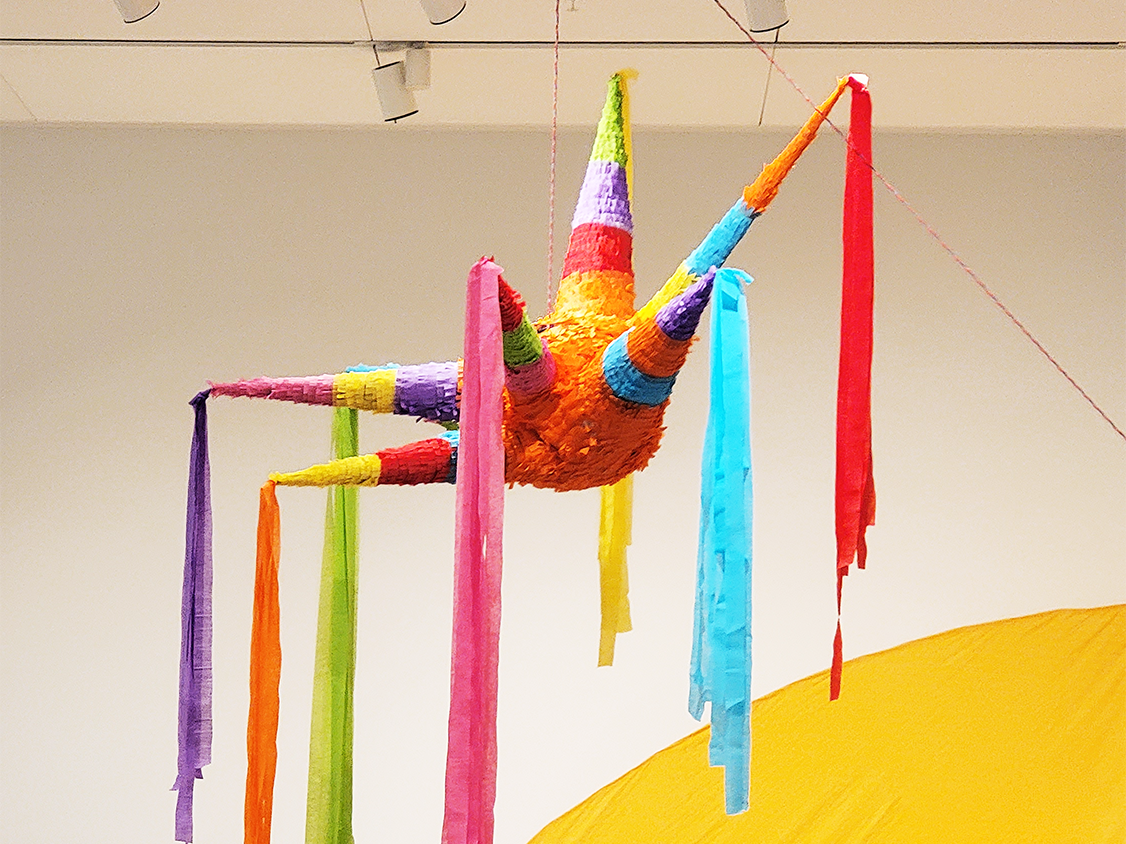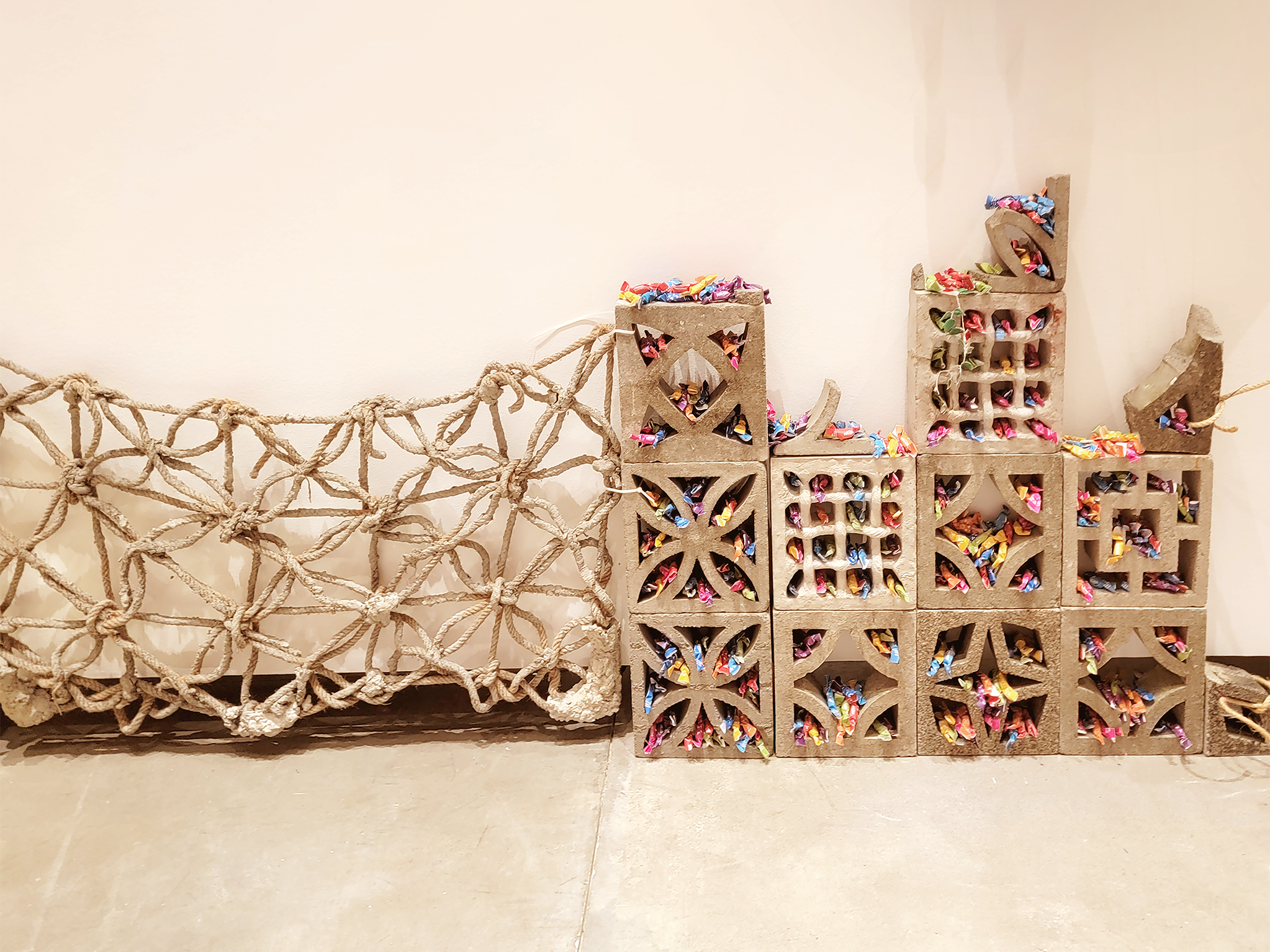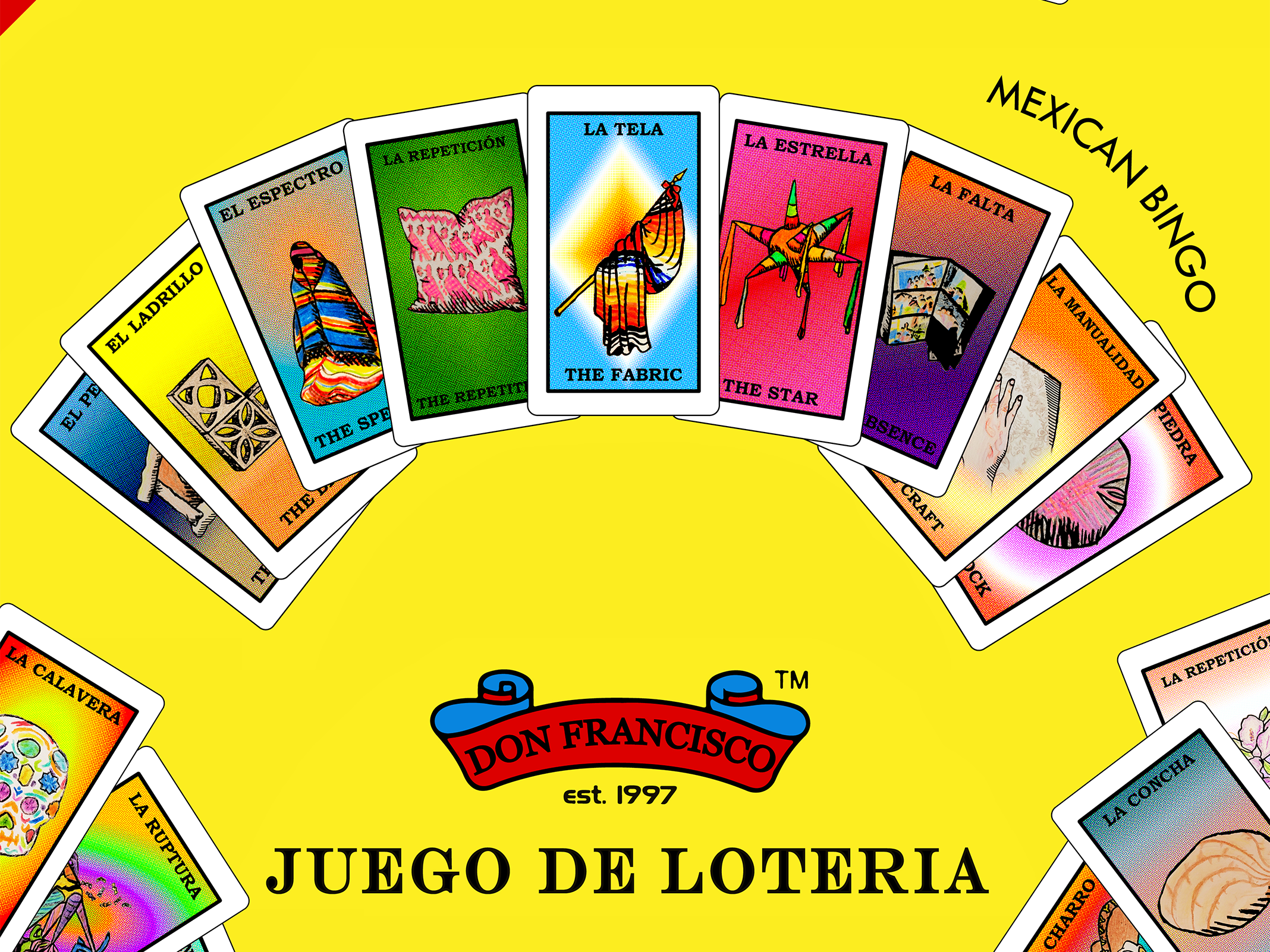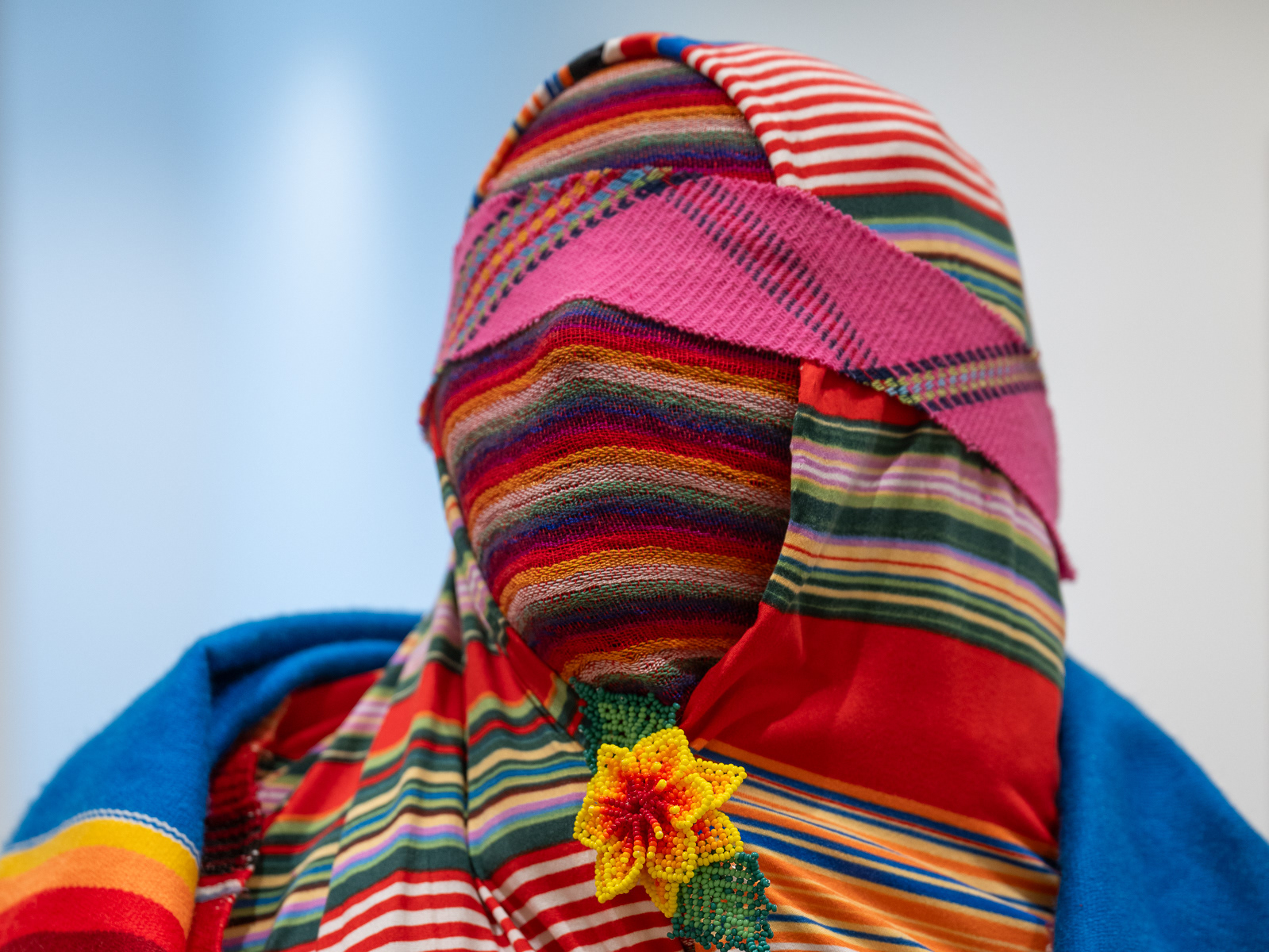Entendedero
2024
¿Lo que se entiende entre líneas y líneas, lo que se queda marcado en la tela, lo que no se seca en el sol, tendedero que se hunde bajo el peso de entender o acaso está mojado?
A wet?
clothing line because its
that starts to or perhaps just
slump by the weight of understanding
The lines I hang in my studio become a recurring form for understanding why I collect the textiles I do and how they situate each other through their associations. Like a line of thought I am able to overlap the cloth, their hues and textures affecting the next, their lint builds up and transfers through contact. The associations I see in them become more tangible as their optics blend and bleed into each other. In my studio, the hand woven textiles I create are hung up with those bought in markets, stores, gifted, inherited, found. My hand can become indistinguishable from the collection of textiles. In the absence of the discernable artists’ hand all objects in the space must be treated as potentially drawing from a perceived “authentic”. The objects are contaminated with my assertion of the “authentic”, the replica simply informs me and is hung at the same stature as my eyes.
My words come on spools
I find myself at a loss for words. The terms I've found familiar that my art has situated itself in are no longer serving their purpose. The fibres I'm using to weave are brittle, they are too thin, and they are the wrong colour. I need new materials, words with the tensile strength to survive my craft, that will not warp my understanding following every wash. I am spinning new words for myself, composite fibres of understanding, terms that might strengthen the cloth. As clothing lines define And divide my space so do lines of thought. As I fabricate my own woven language I explore the agency of craft as the artisan word rolls off my tongue
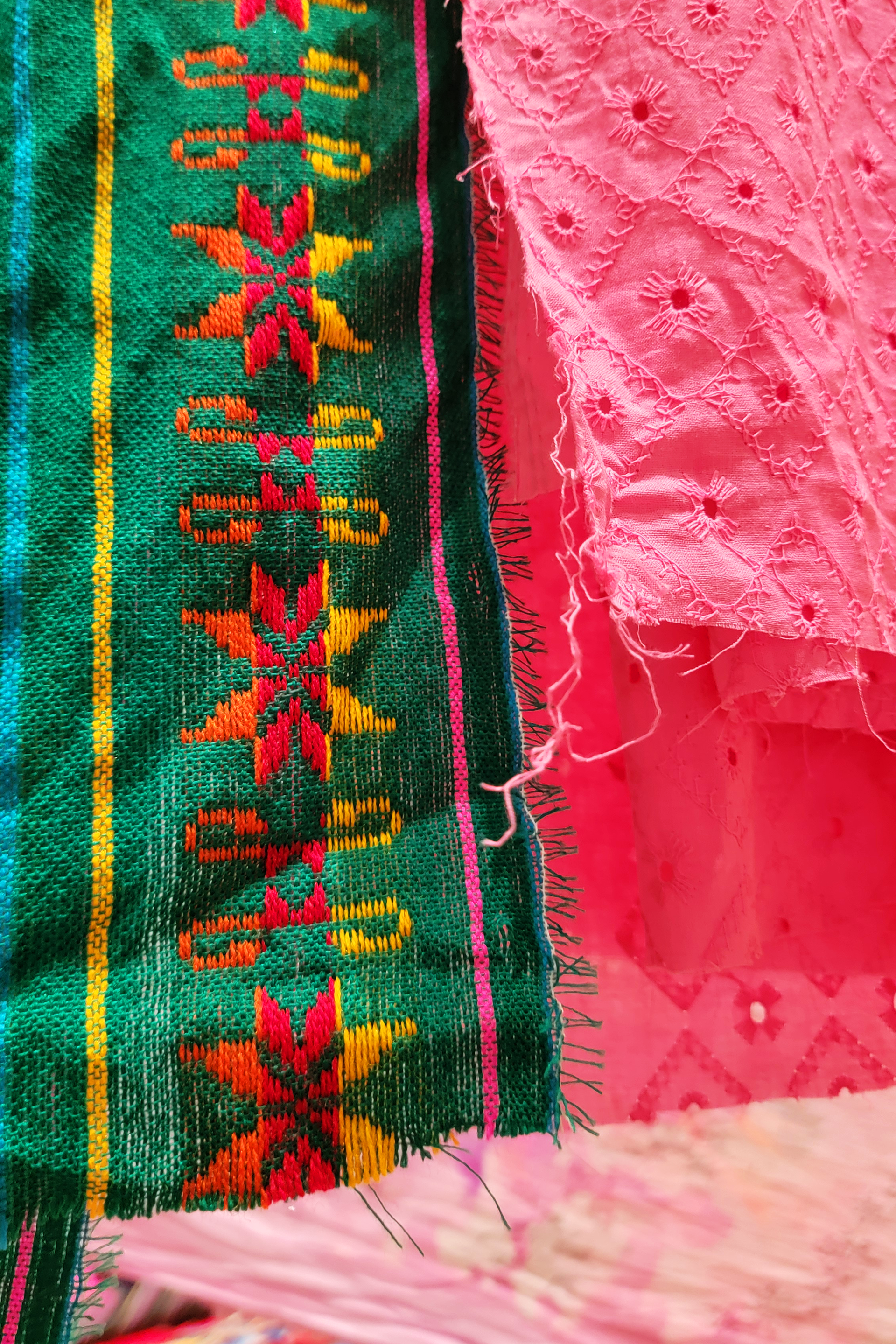
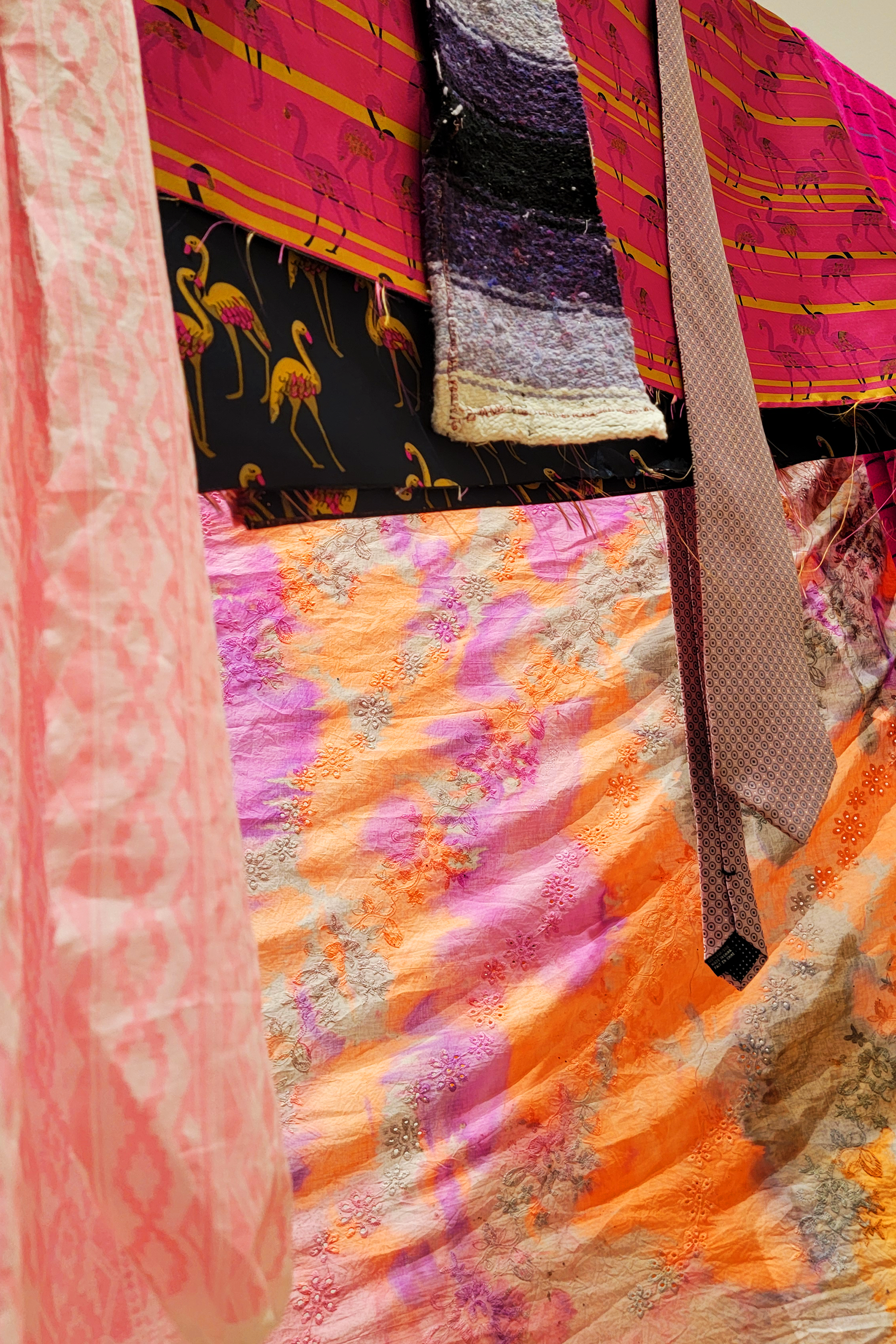
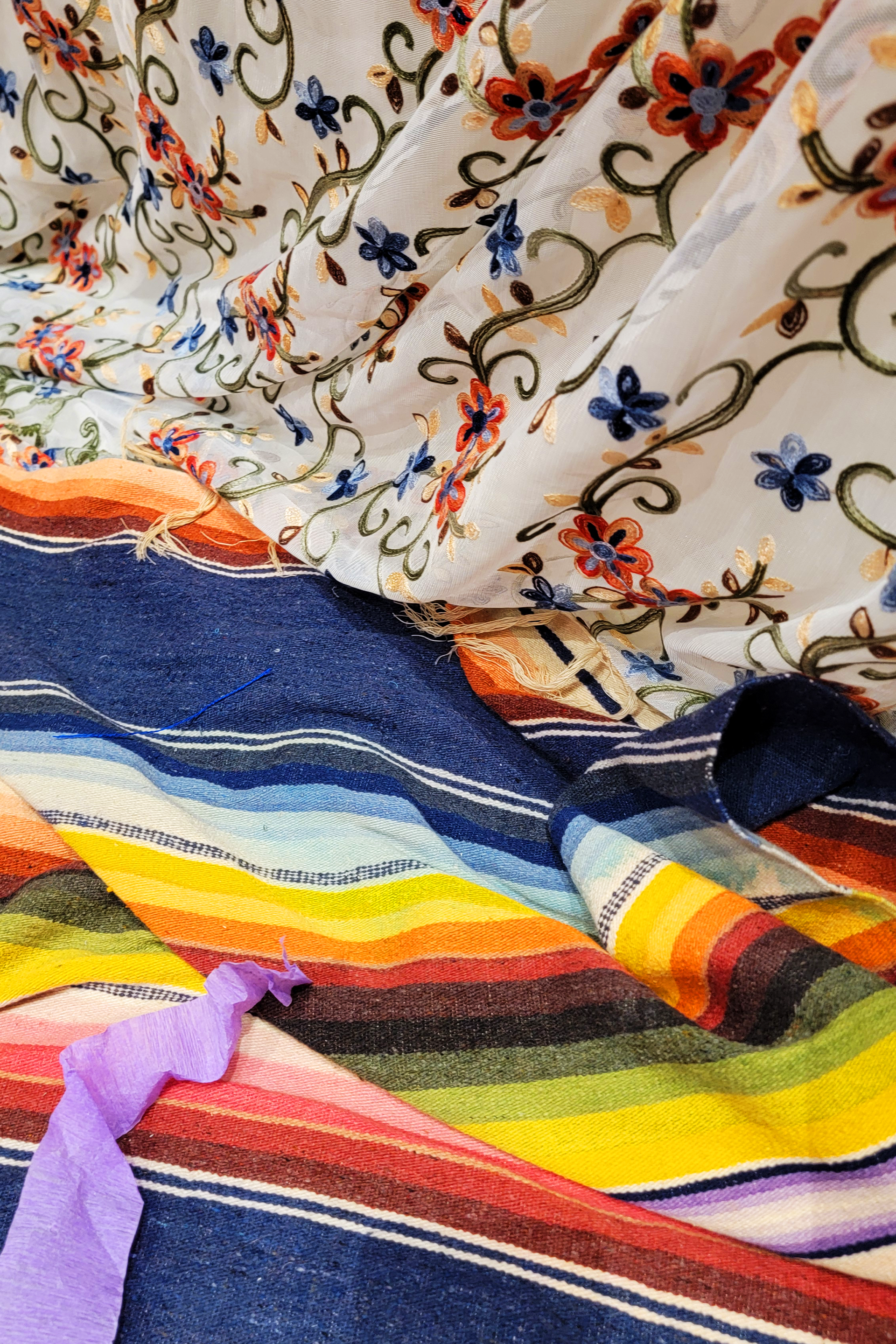
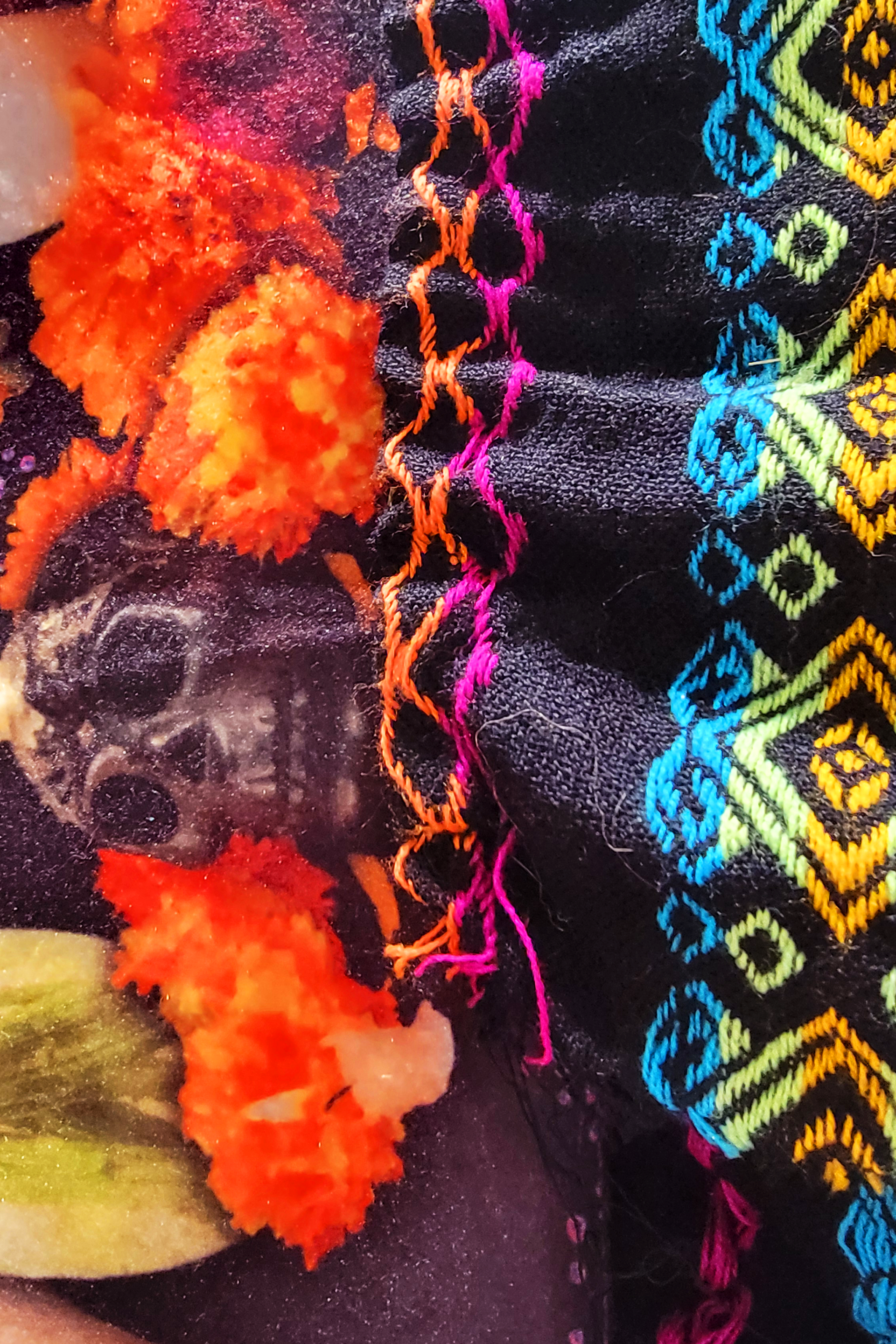


Accounting for Bleed
2024
In my studio I hang up dozens of metres of freshly dyed eyelet cotton. Dyed with cochineal (a natural dye native to Mexico) the bath has a deep purple tone to it. As I pull out the fabric, I watch the purple drip off its selvage edge. The drips make lines on the floor staining the concrete. But the purple does not stay, its hues dull as the air gets into the fibres. Oxidising rapidly, the fabric shifts towards a muted light greyish colour. I figure that this has something to do with the air exposure, but also the fabric was probably pre-processed with a chemical that is now muting the dye. It’s not that the fibres are not saturated, rich with cochineal particles. They are just dulled, it looks as if I perhaps just washed the fabric with a forgotten purple sock. But now I’m standing inside this shrine of fabric surrounded on all sides with flower eyelets. I can make out familiar places in my studio through the holes. Iconographies hung up and collected on the walls are juxtaposed by my eye with the dull cloth. Perhaps if I reintroduce some of these iconographies I might be able to salvage some of its vibrant edge.
When you dye fabric with natural pigments the choice of mordant bath is essential, cochineal can appear like a vibrant red almost orange with an acidic mordant but will shift pink, beyond fuschia, towards plum, and settle in a deep black purple in a basic mordant. Its chemical composition has disappointed me so I start adding these mordants back into the textile. I take a brush dipped in lemon juice and begin to render diamond shapes, quickly the cochineal reacts and becomes a vibrant red. I’m quite happy with this colour so I started painting on more diamonds which then became peacock designs reminiscent of my grandmother’s embroidery. I consider adding a basic mordant to give some contrast along the edges, I brush on calx and a rich purple appears along the vibrant red. But as I look away the two still wet mordants start to interact, the place where they meet becomes neutralised, the iconographies are blurred as they begin to bleed. I add more mordants of different kinds each interacting with another in unexpected ways. Creating fuchsias, plums, pinks, but the mineral nature of the mordants starts to show as the iron makes contact with the calx and corrodes itself, creating putrid yellows greens and browns that smell like rusted metal. The finished cloth is now a loose association of icons that shift into each other and mark out boundaries with absent saturation and unpredictable colours.
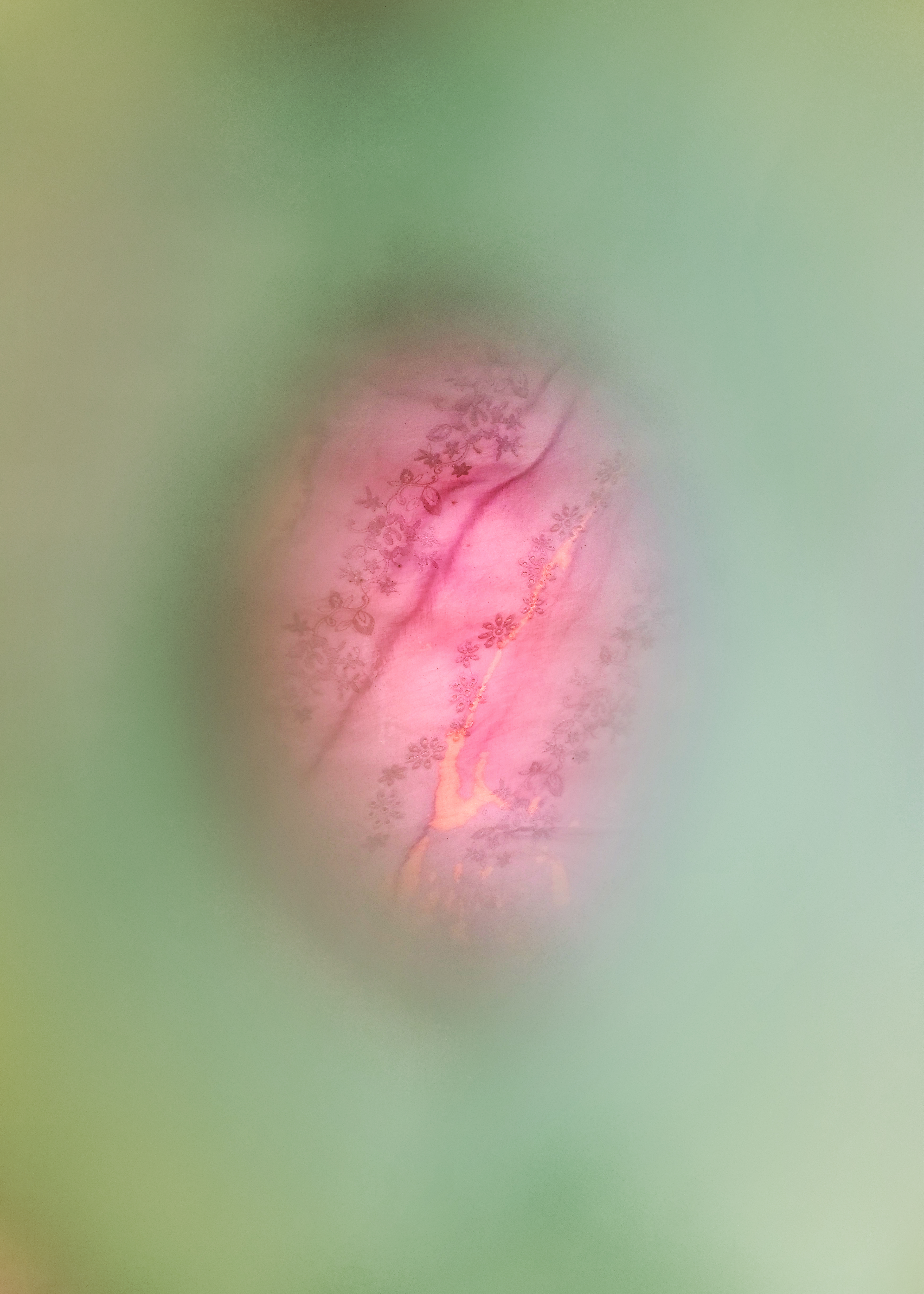
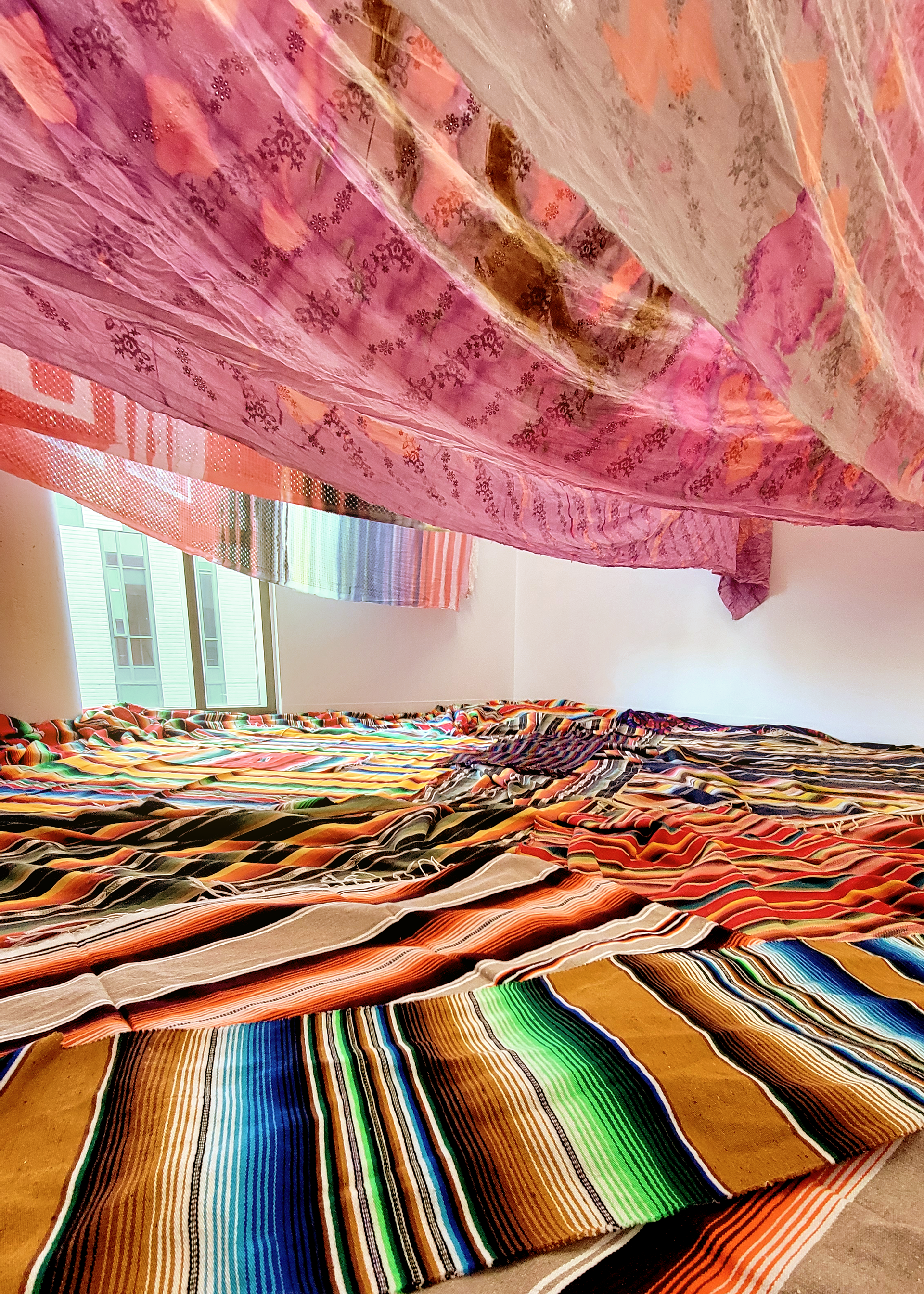
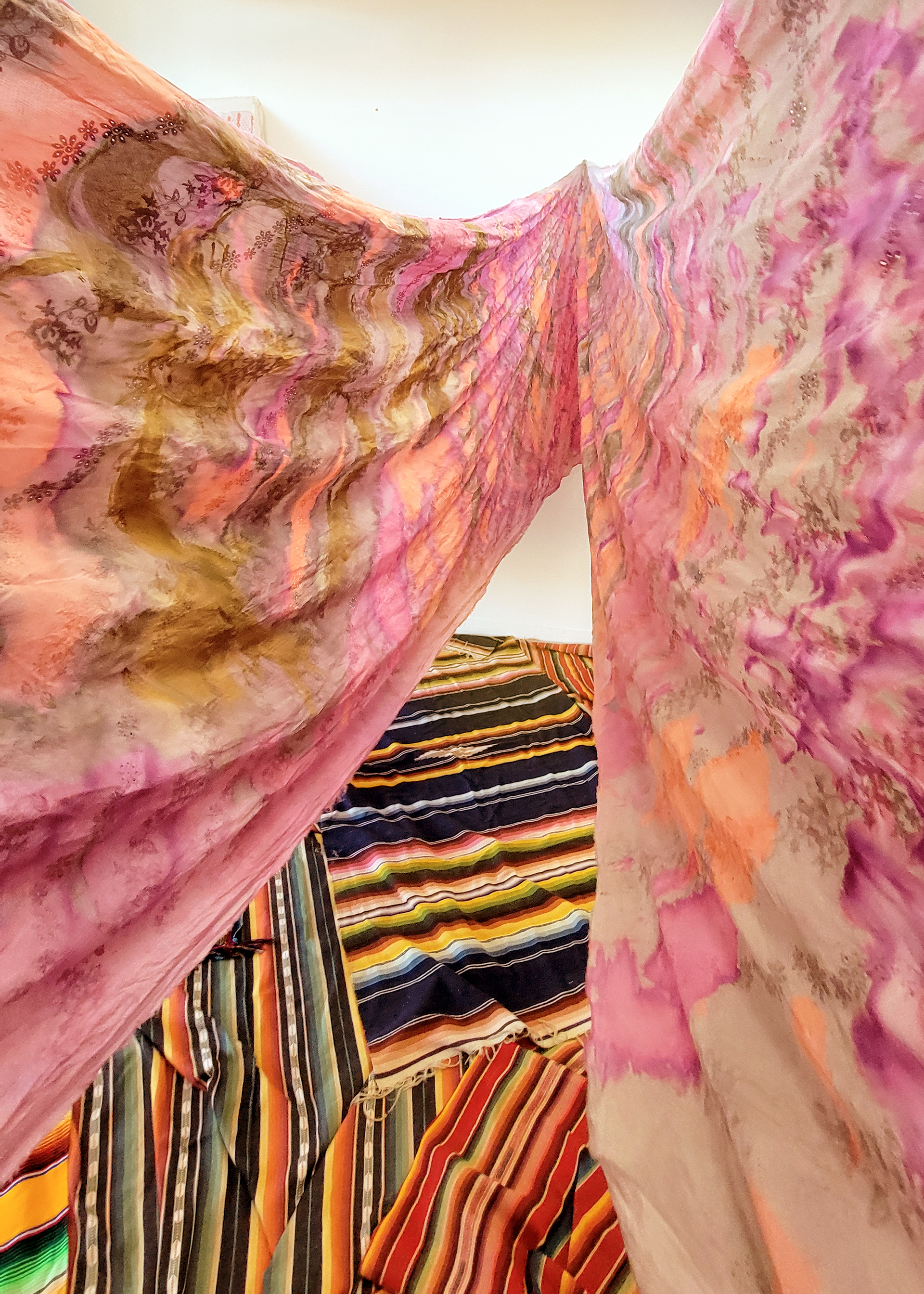
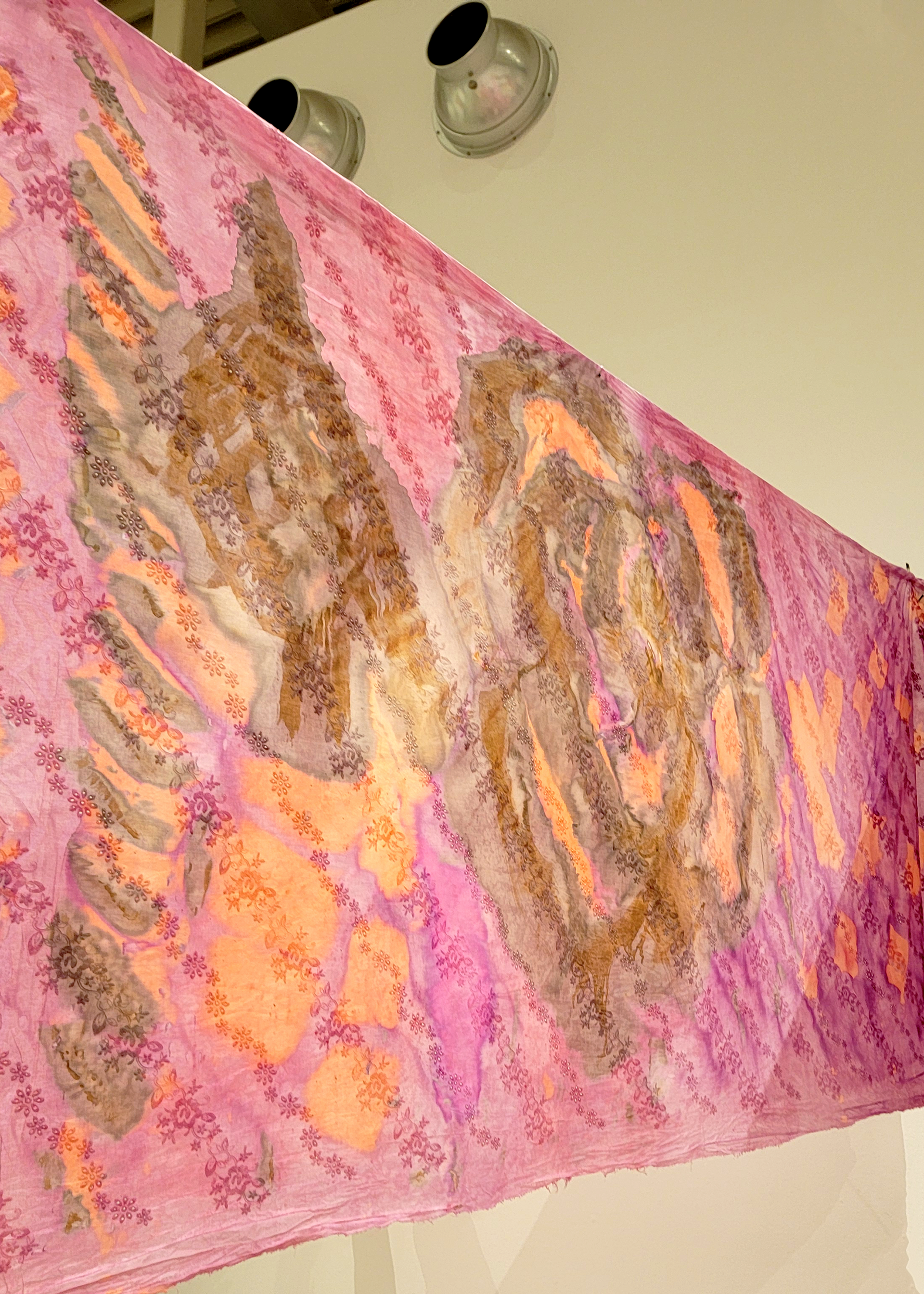
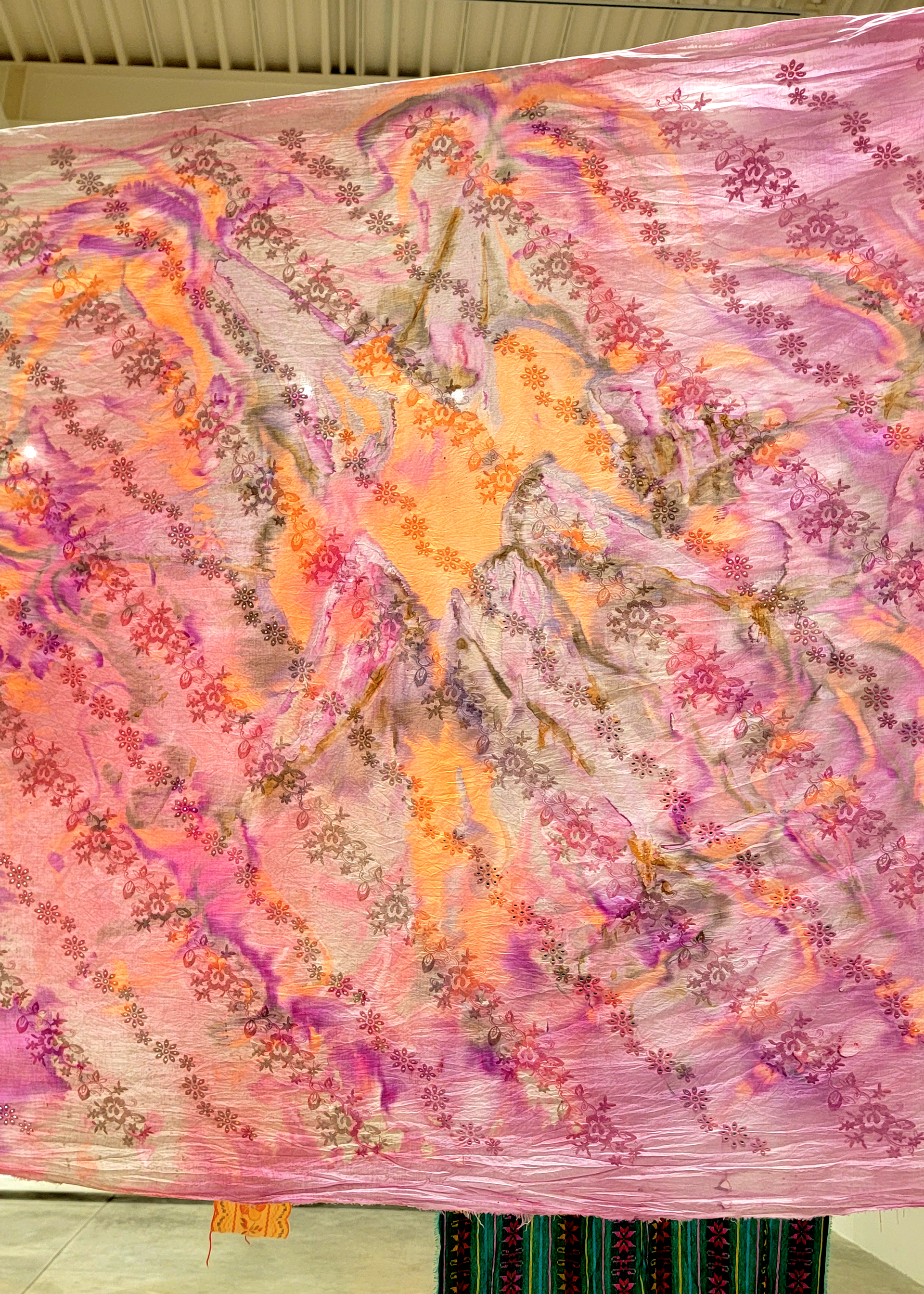
The Wefts Still Have Things to Teach Me
2020 - ongoing
In 2020 I set out to create my own serape, my serape was to be a living textile. By weaving the living grass, I wanted to explore how identities form out of living memories. It was my way of explaining my relationship to Mexico as a complex system of changing moments that come together.
Then the grass died.
In 2021, I began weaving again. The piece then became about holding on to something that felt lost. The grass felt like it was grieving, laying in wake for what it could have been. Weaving became difficult as the strands snapped and the roots rotted. But I didn’t give up. It’s not what I thought it would be, but the more I wove, the more it became something new. The grass is a memory held together with twine just trying to make sense of its place, its identity. I realised I had viewed memories as living, still changing, but perhaps they change because they are decaying. My serape had died but maybe that was exactly what I needed, perhaps the serape was transforming it self one more time to show me what I needed to know. Now every spring I replace any plants that have died with vines, they twist themselves into the weft as the reach for each other. The vines often converge coiling into fringes, bending into braids.

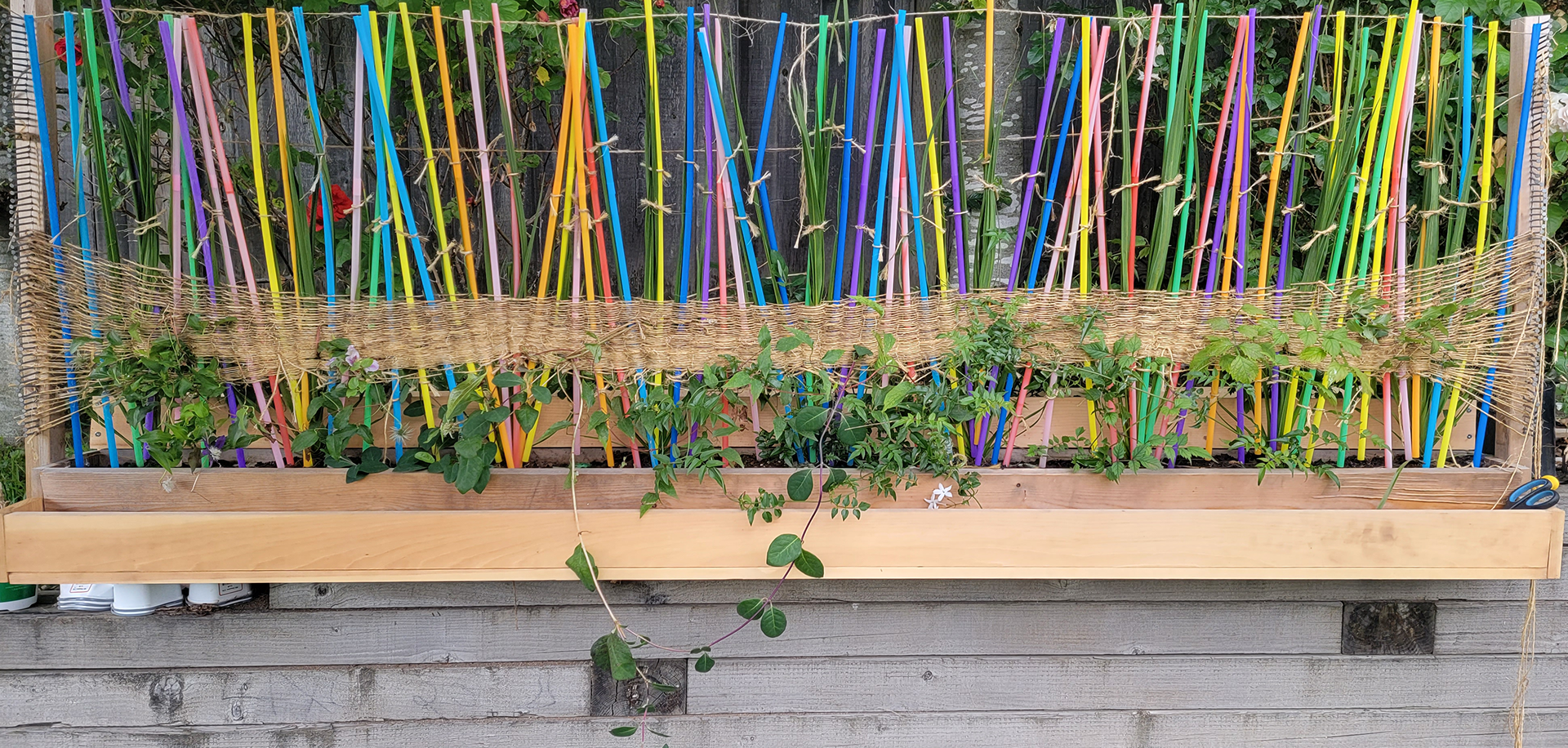
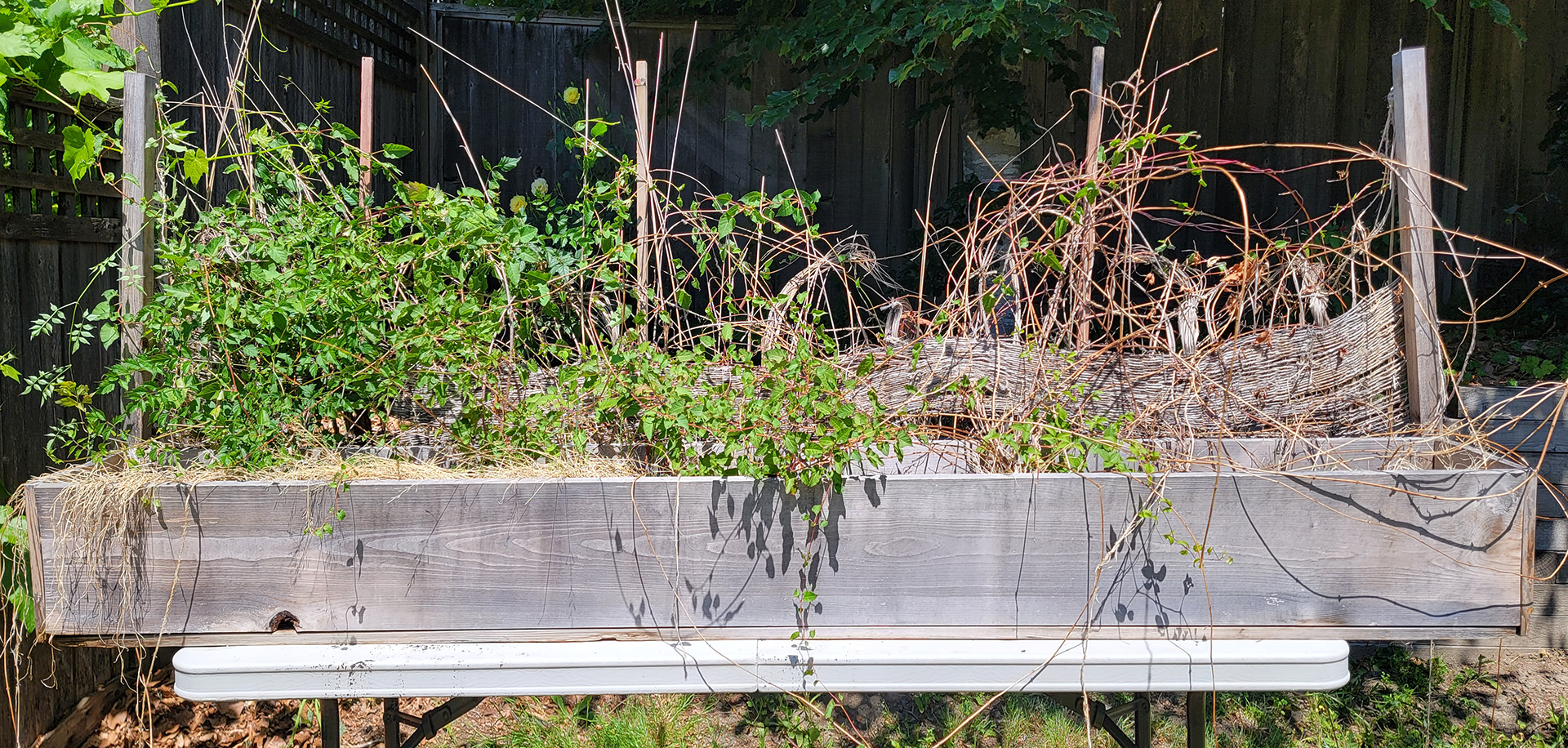

Se te aclara con el Sol
2021
The wind picks up a bit and the sun starts to shine.
When I was a kid, every year when spring started, my mom would tell me that my hair would get lighter with the sun. She would cover my head in manzanilla and send me out to play in the sun. I was always so excited for my hair to change colour as the sun slowly bleached to a half shade lighter of dark brown. It wasn't all that noticeable of a change but, for me, I felt like a new person each summer.
In 2020, I came across an odd piece of fabric. I was drawn to it because it reminded me of some pillows my grandma once made that she had embroidered in a rich pink. The fabric was a thin loose cotton with a geometric pink and white pattern that smelled of dust. As I began to unfurl the fabric, the pink shades slowly drifted to pale peach and off white. I was disappointed since the peach tones reminded me much less of my grandma's pillows, I can only assume that the fabric had been sitting in the store for so long without any use that the sun sneaking through the store windows had bleached it. Maybe the fabric also wanted to change for the summer? Maybe in a way to feel more authentic to its pattern that seemed to derive from Mexico, on its salvage some faint wording read Aztec muslin. I wanted to give this fabric the chance to fulfil its change, I hung it in the sun for a couple days and hopefully soon it will be fully pink. For now, I can just document its slow change as it tries its best.
The Sun Has Done It's Part
2021 - ongoing
Since last we spoke the serape was slowly fading from peach tone to a soft Mexican pink. It has spent many days in the sun as it became beaded and embroidered. Its colours matured with every passing minute, slightly uneven as its own folds cast shadows on itself. It has become more authentic, decorated with brilliant thread and glass beads taking on the images of a peacock on an embroidered pillow my grandmother made. Its tones are now rosed with the sun and its imagery partly complete. The sun has done its part now it's up to me.
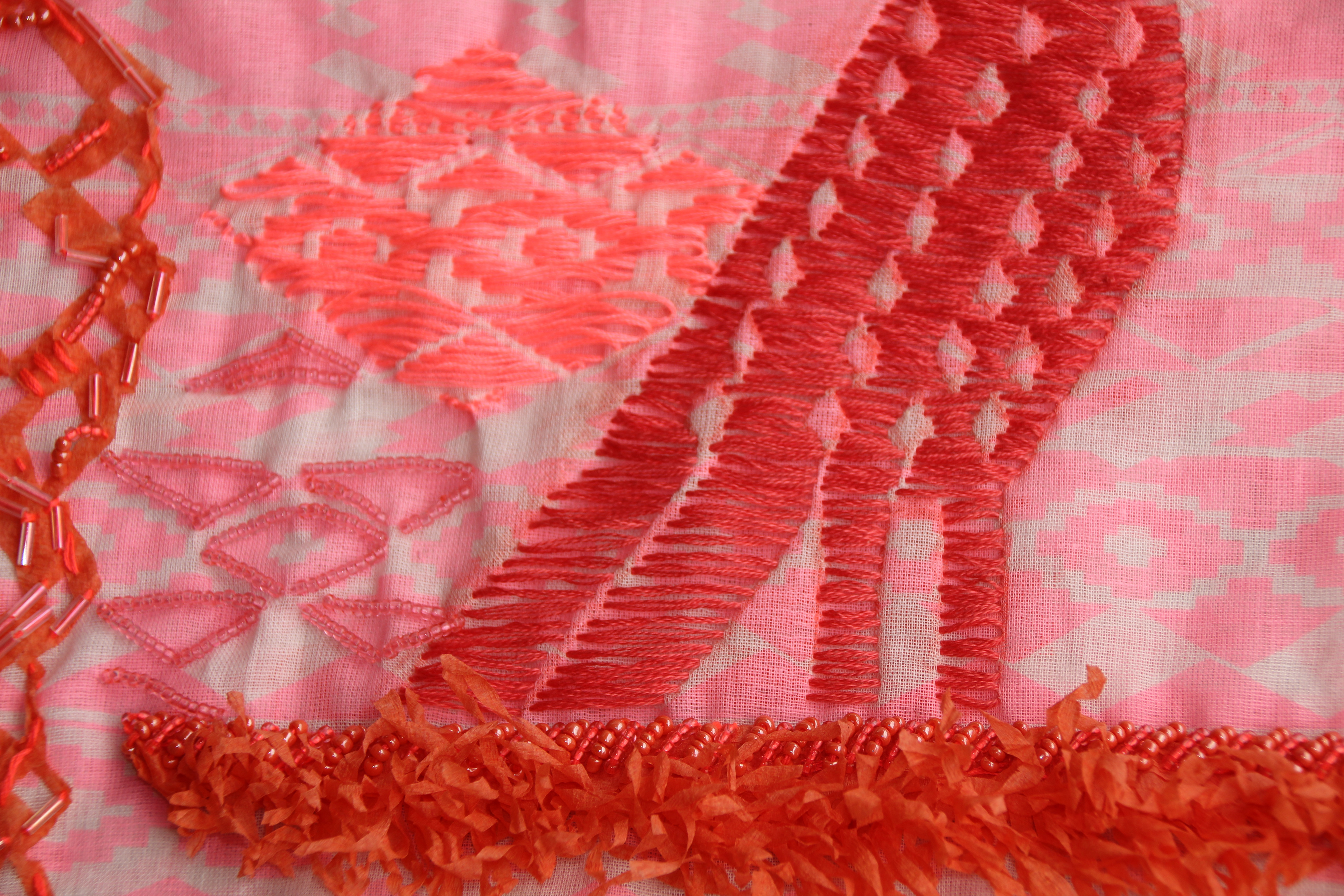
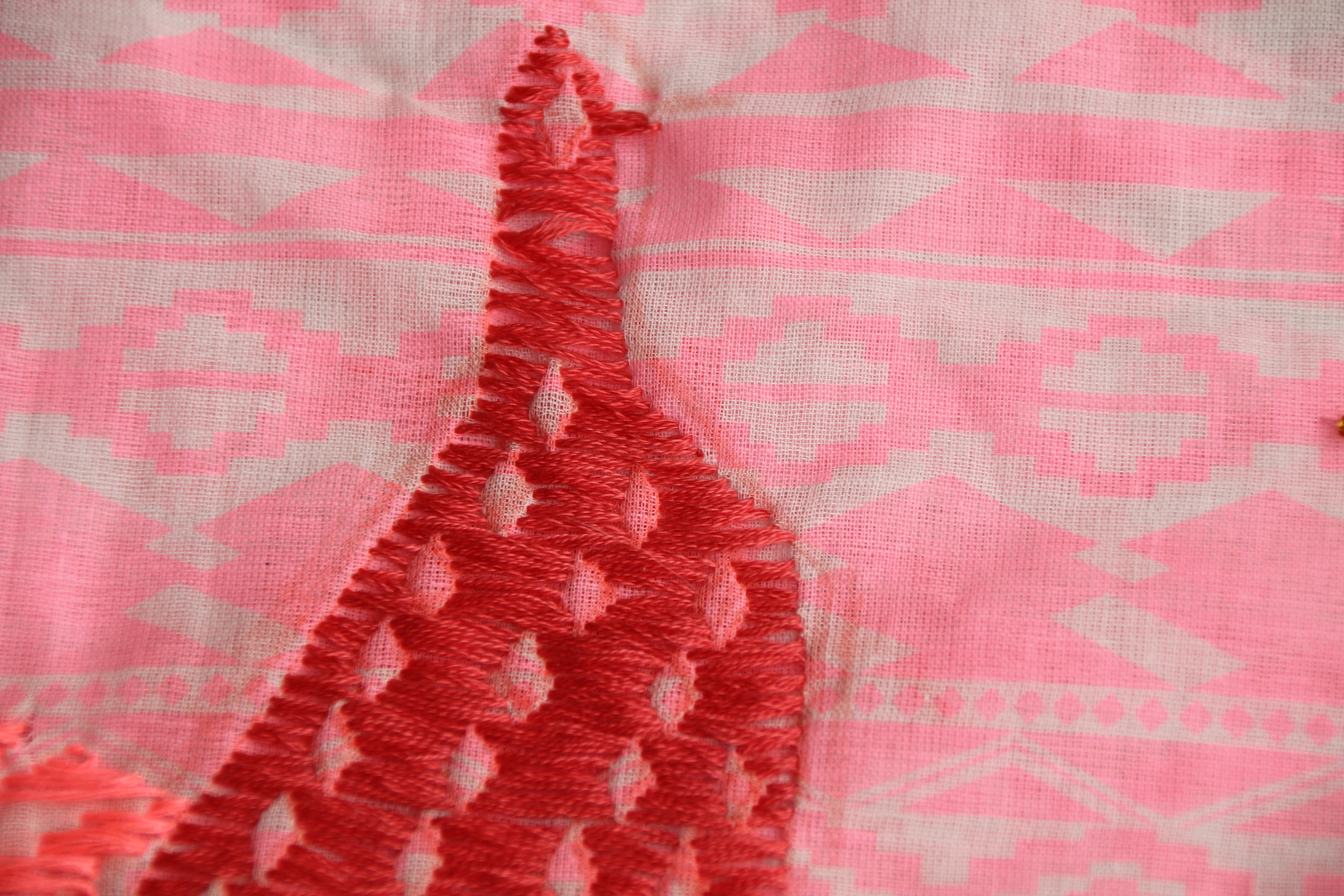
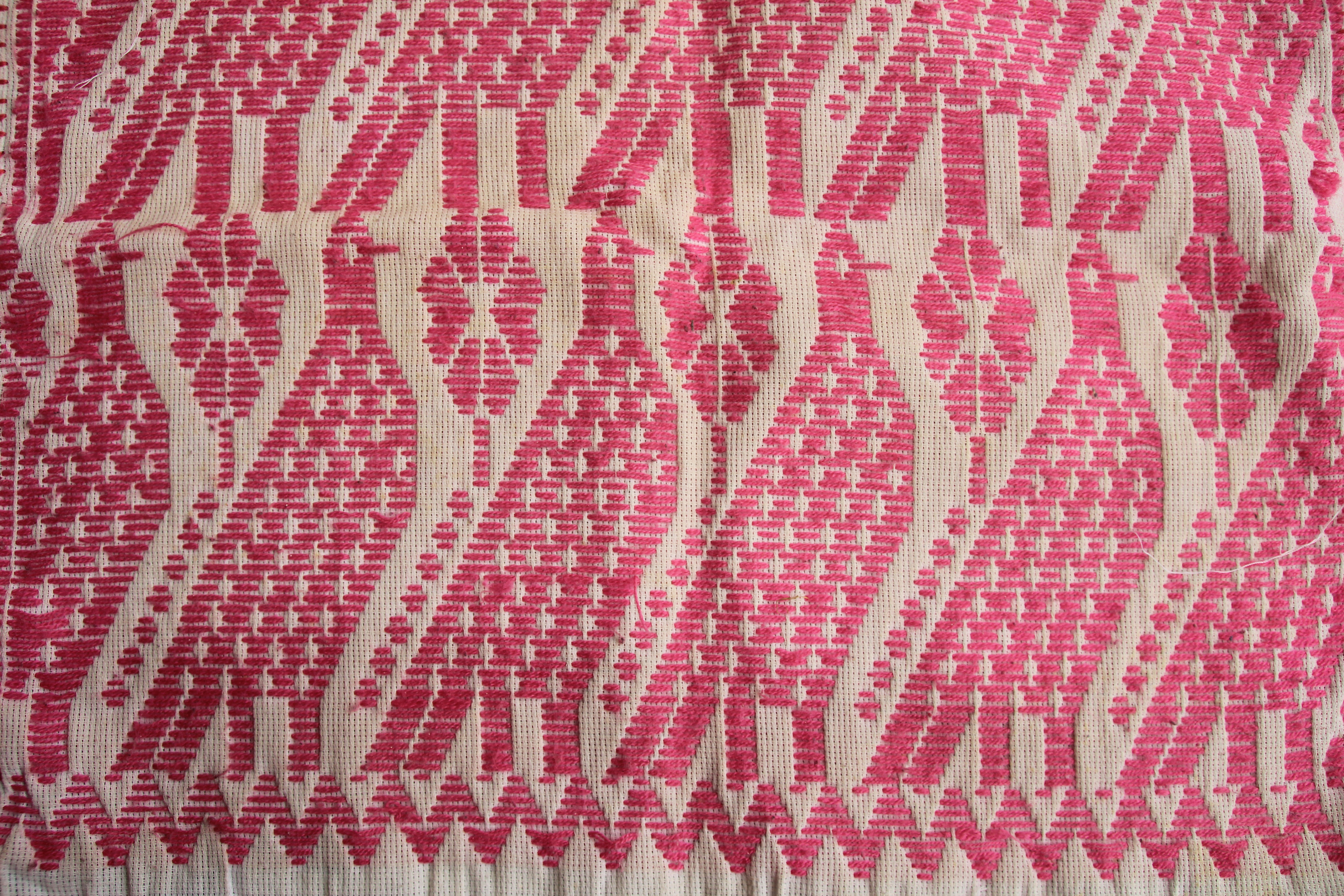
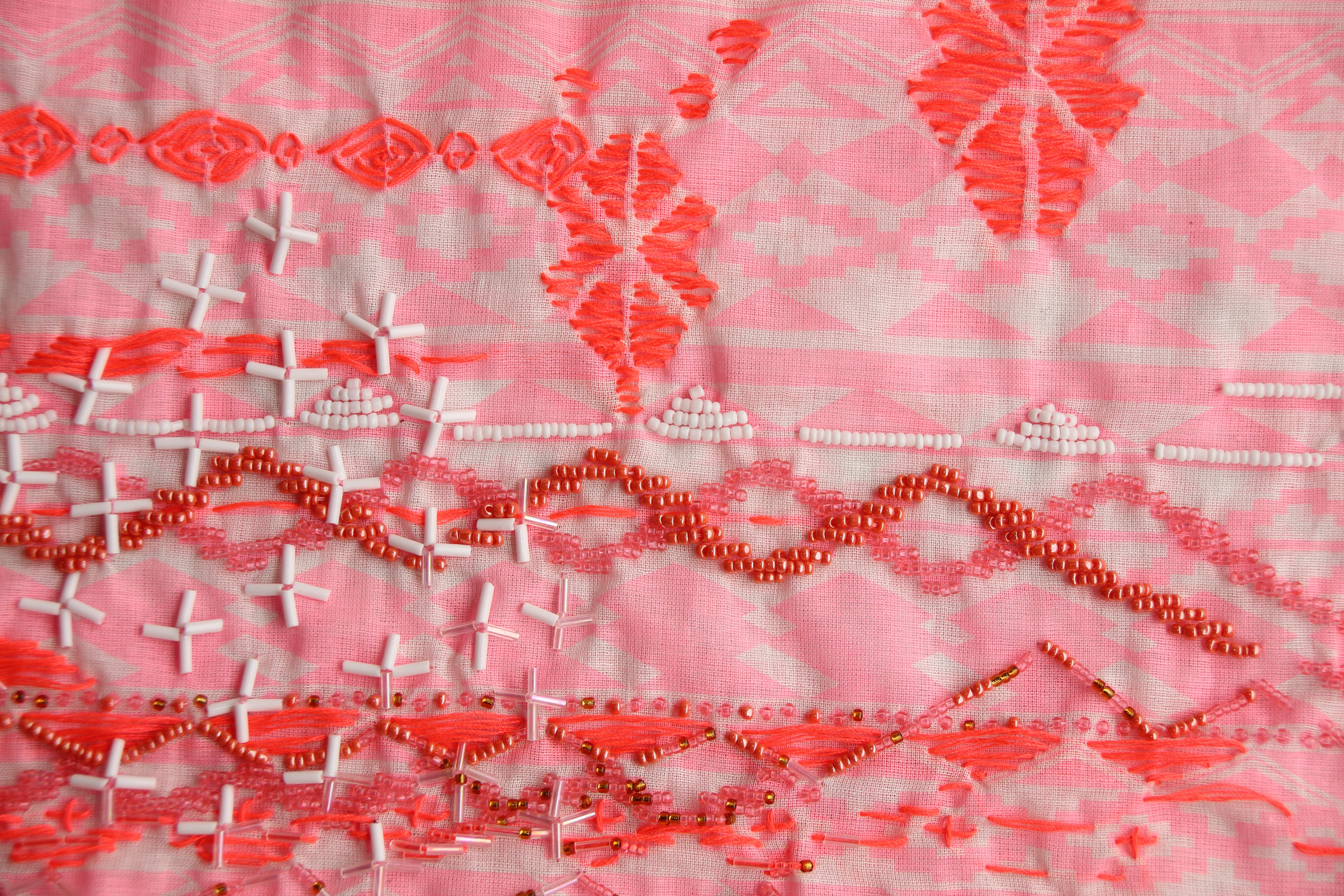
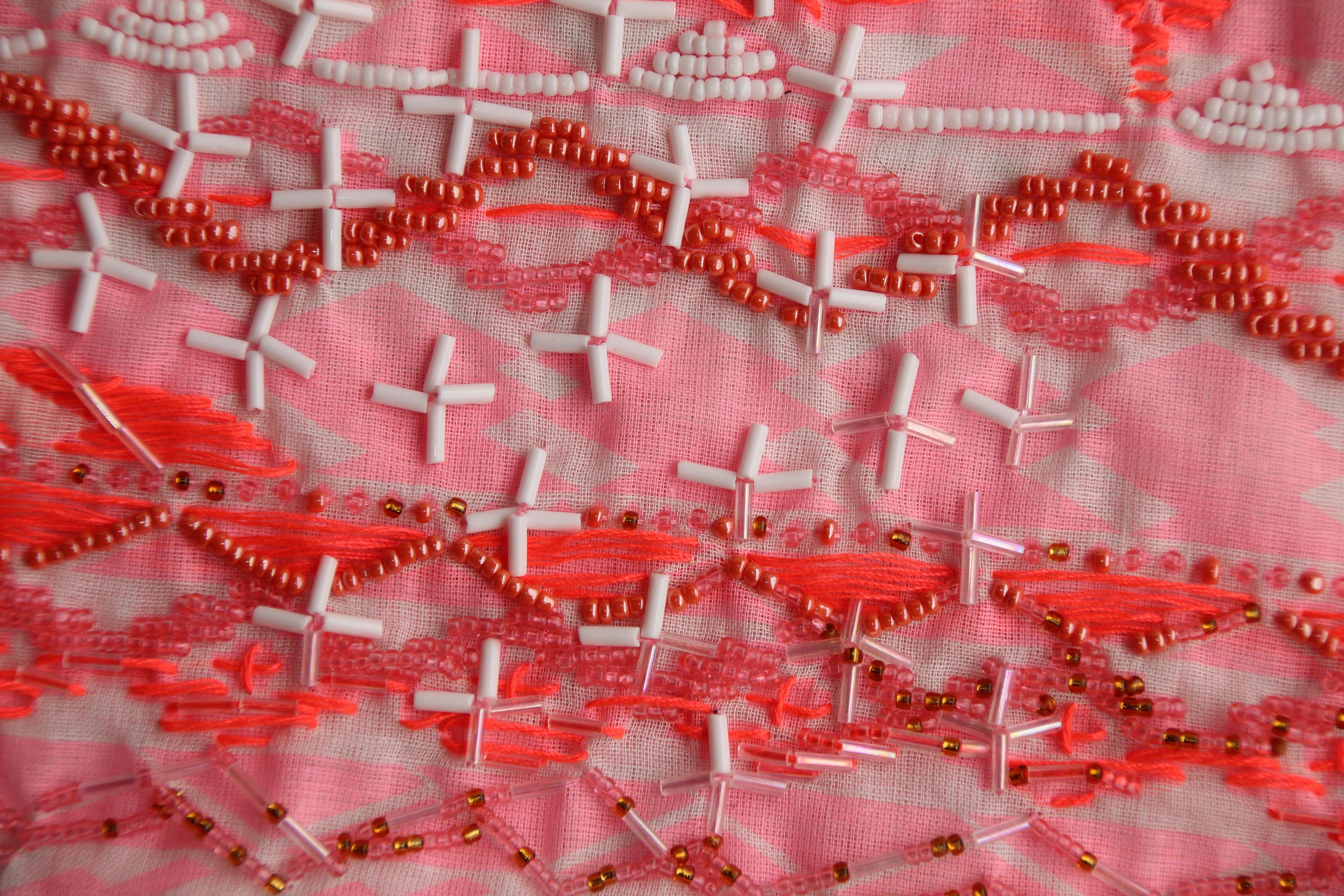
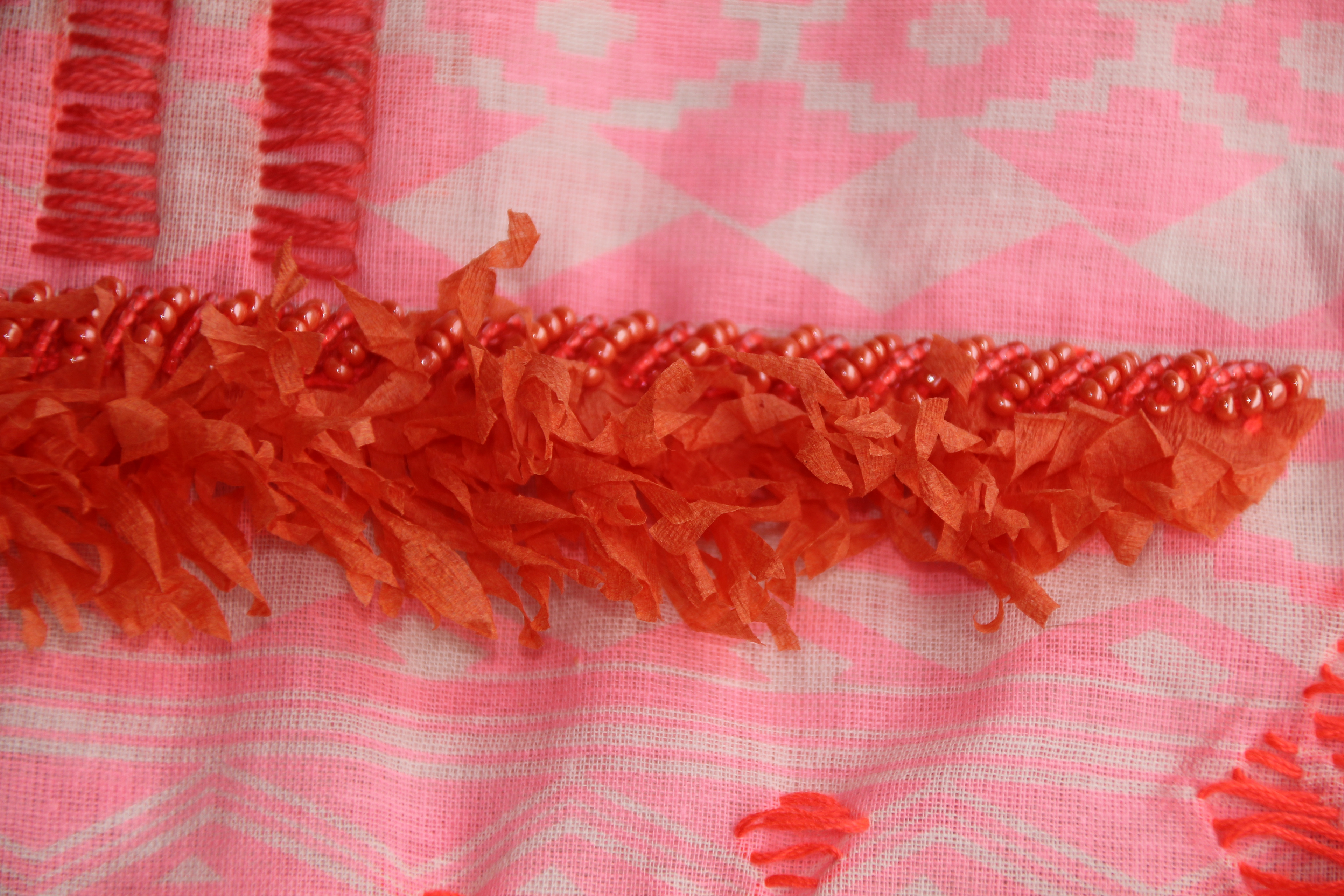
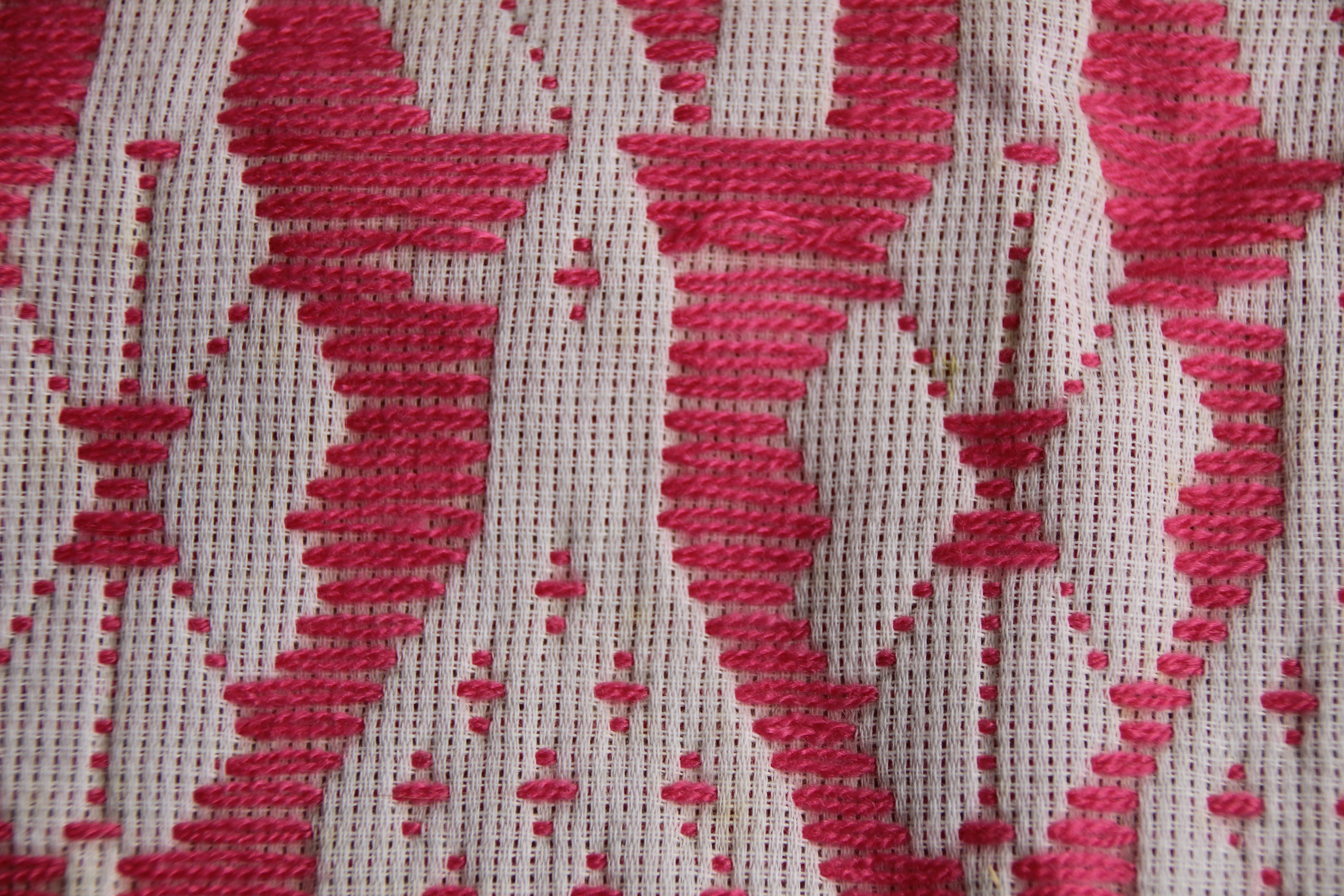
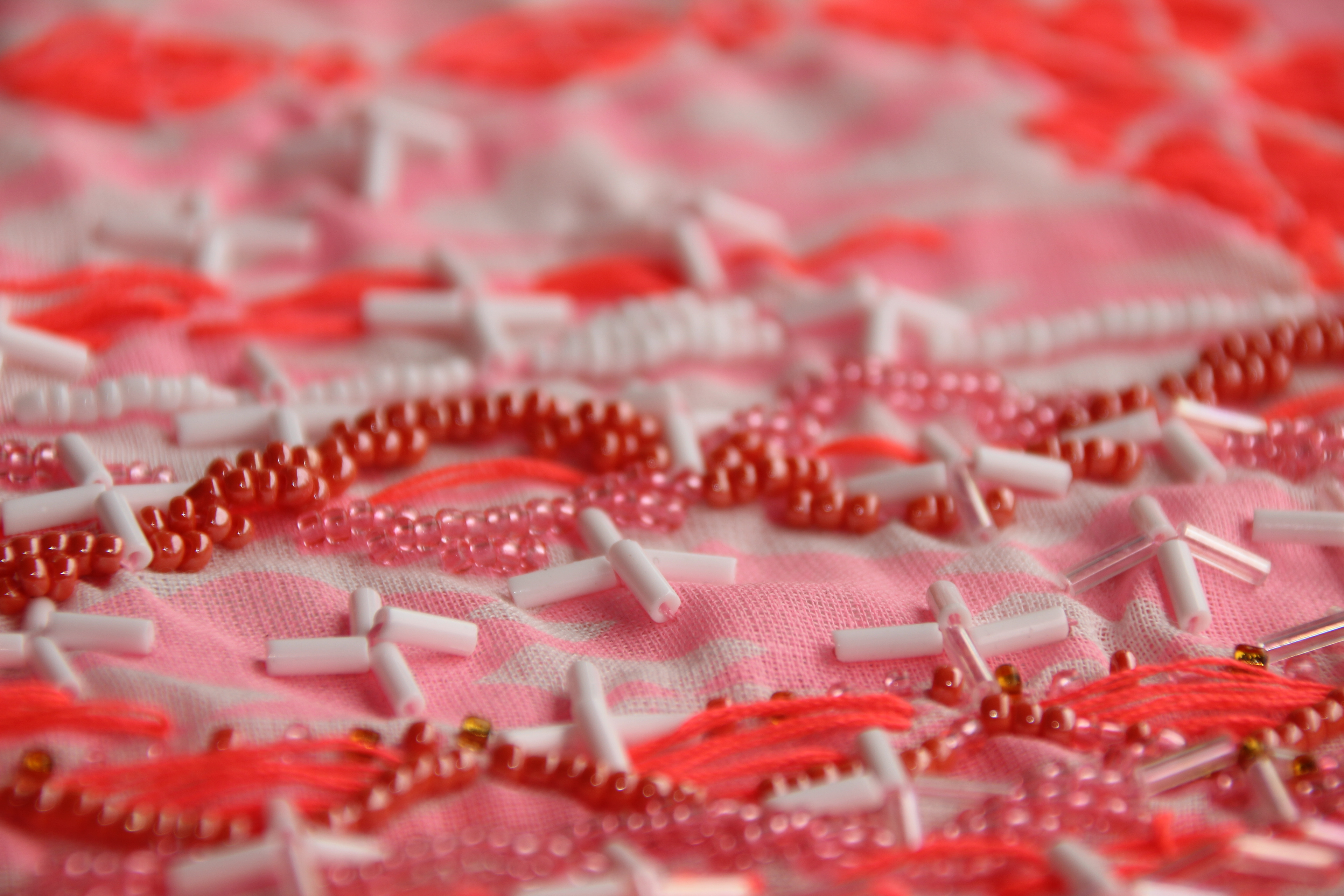
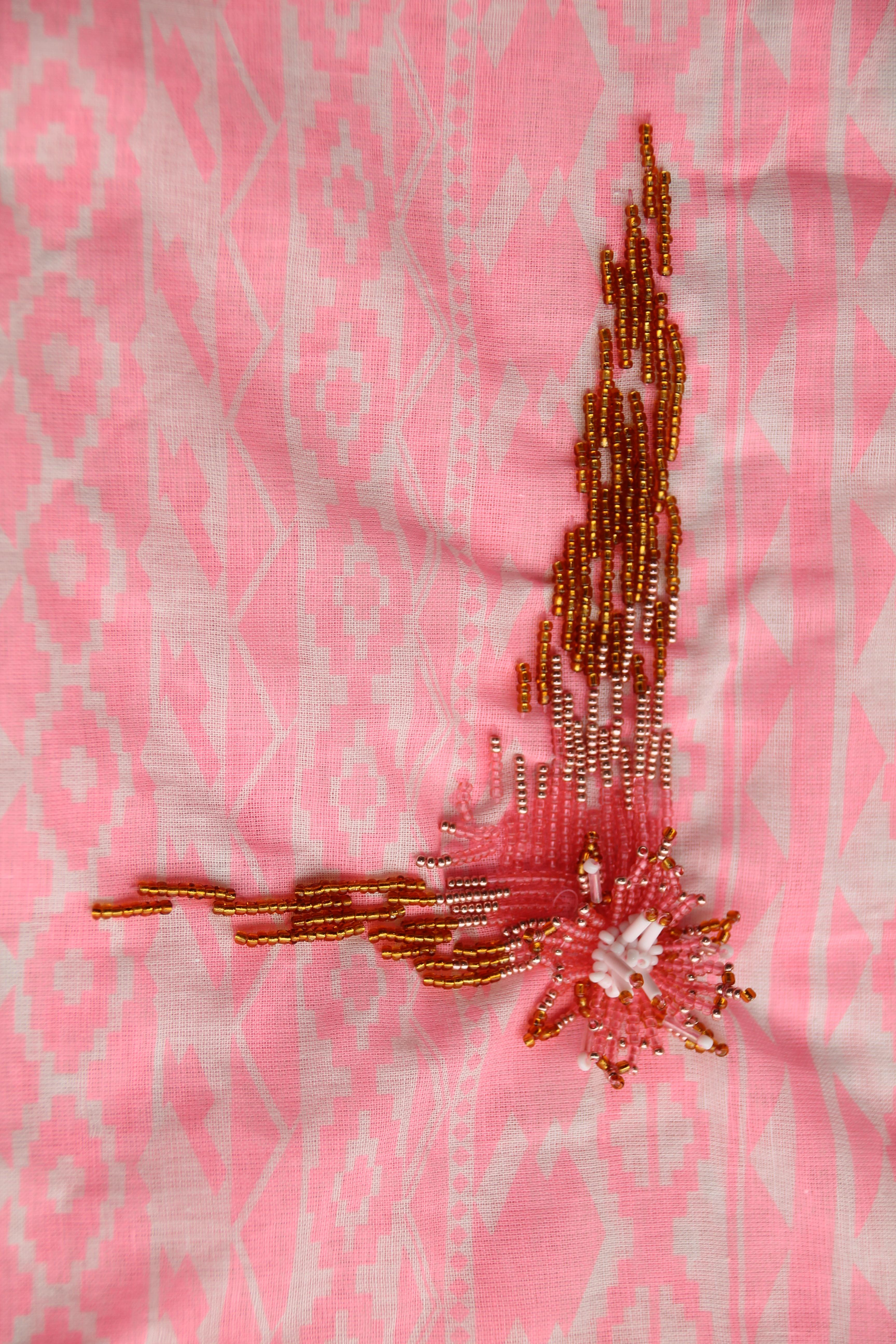
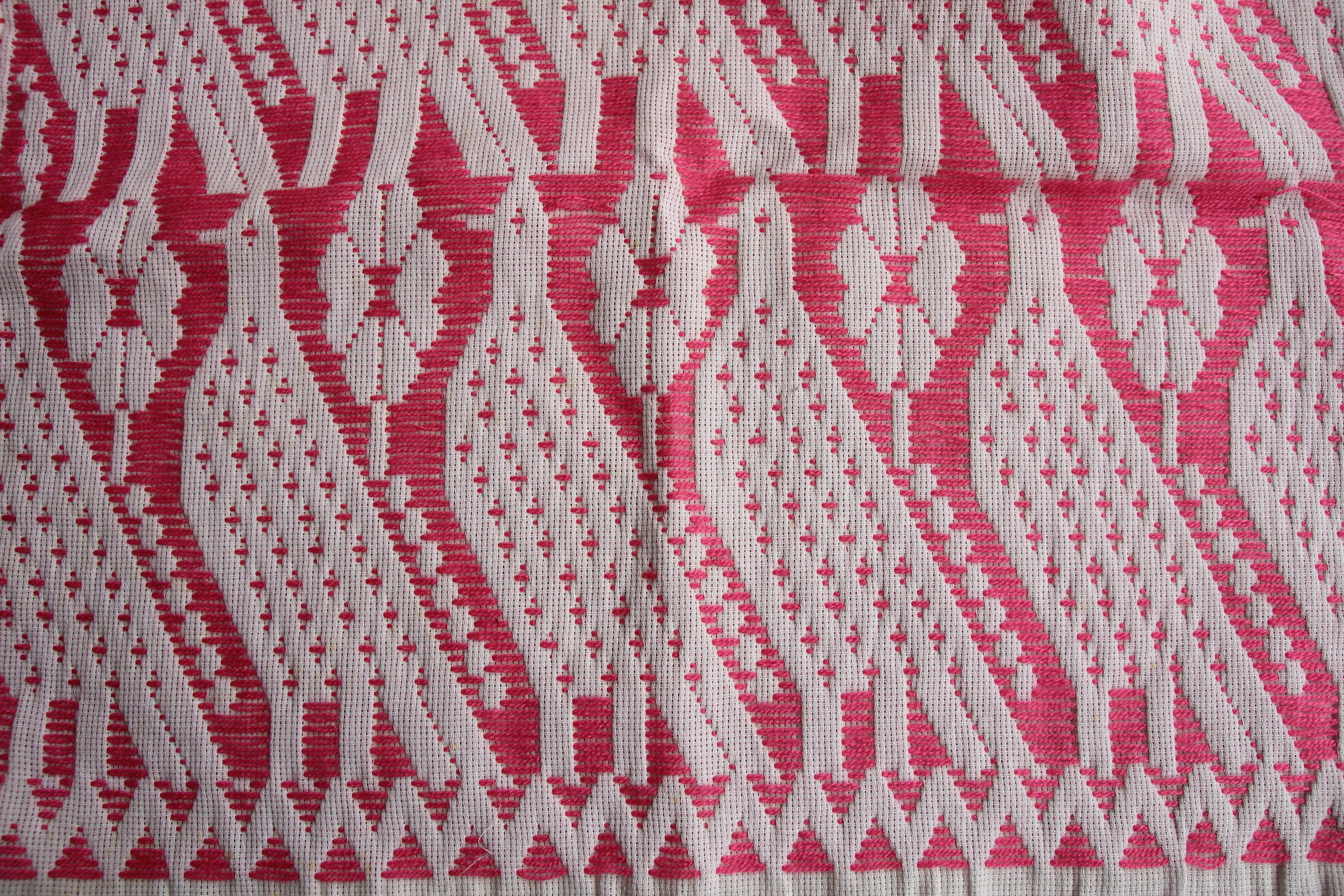
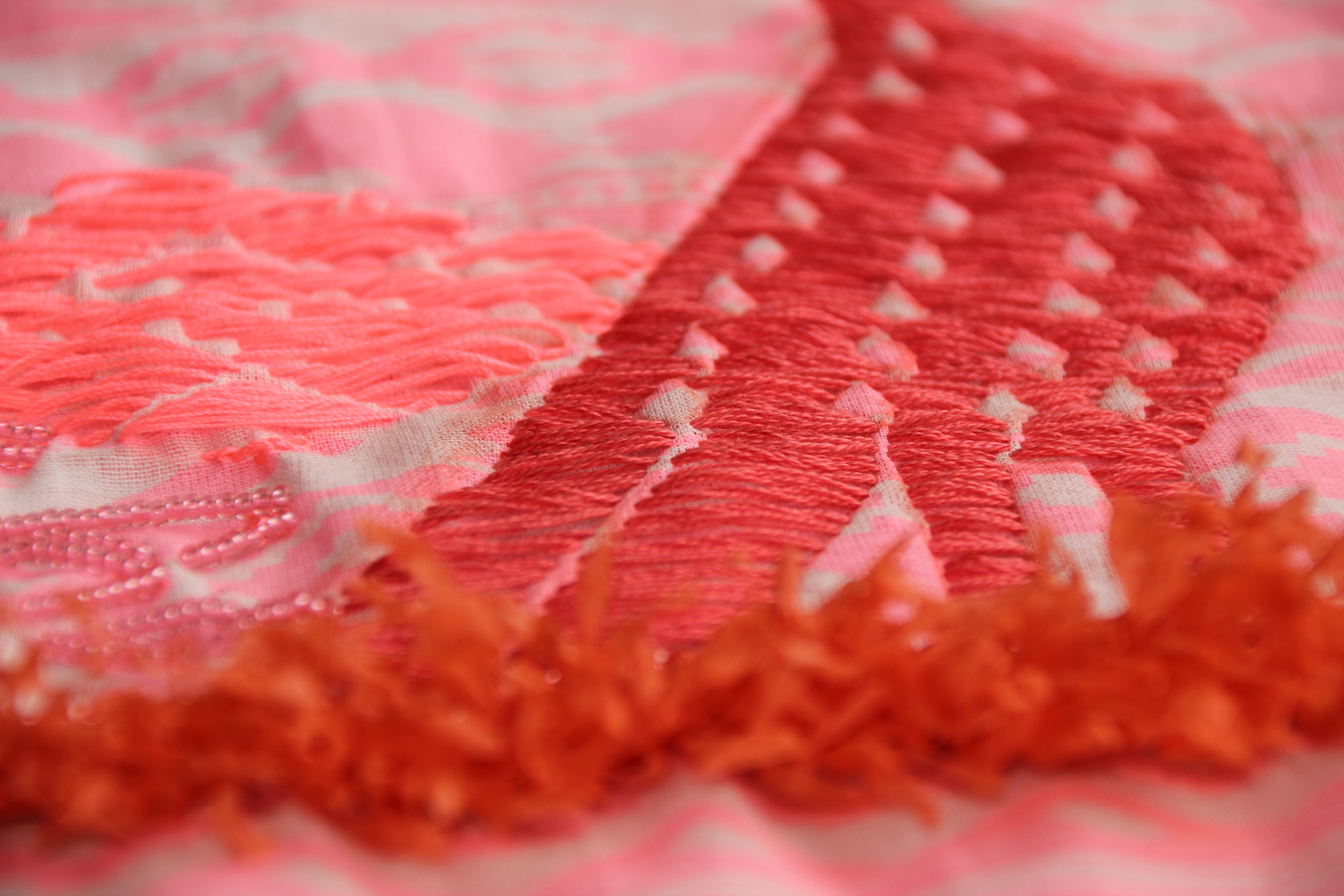
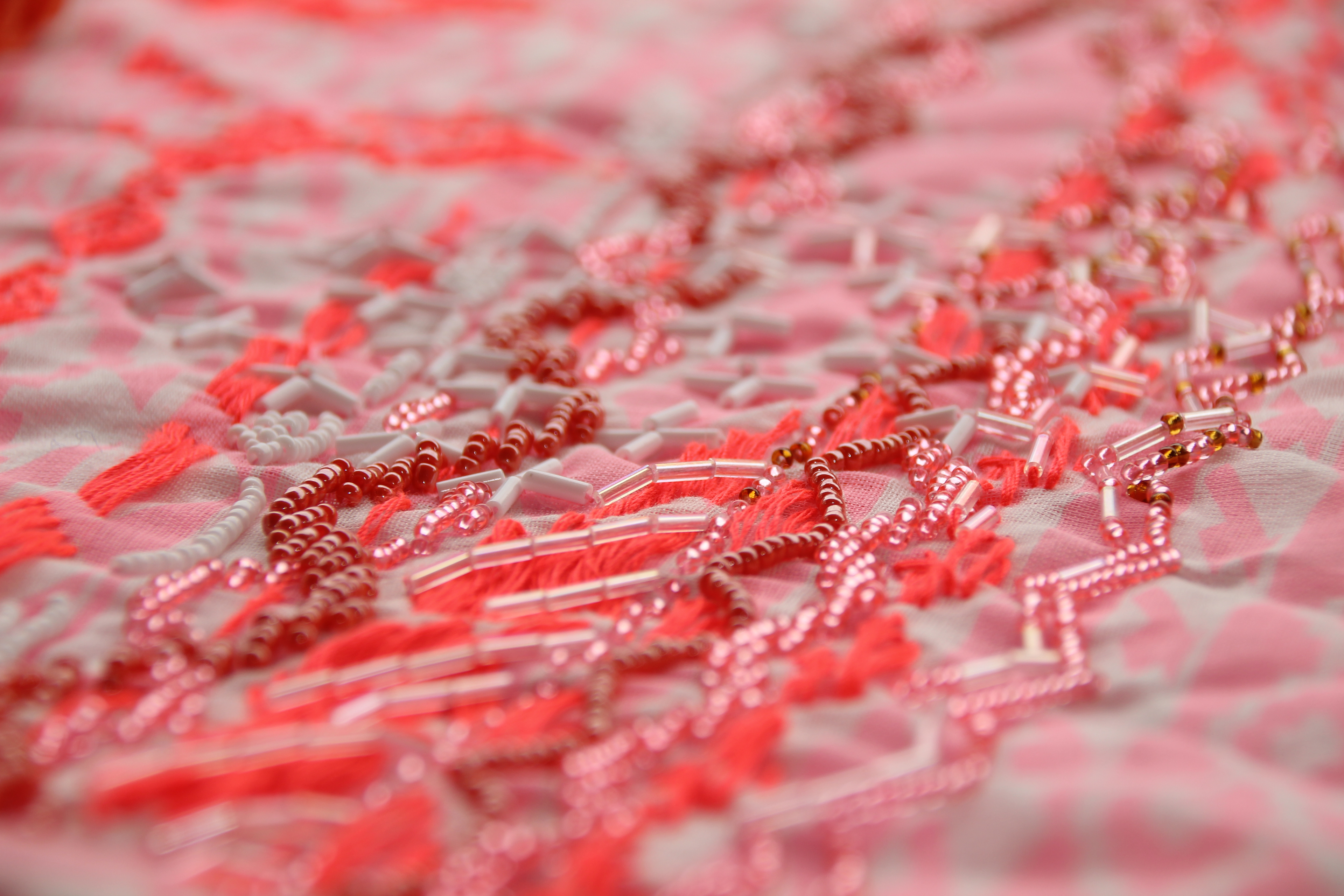
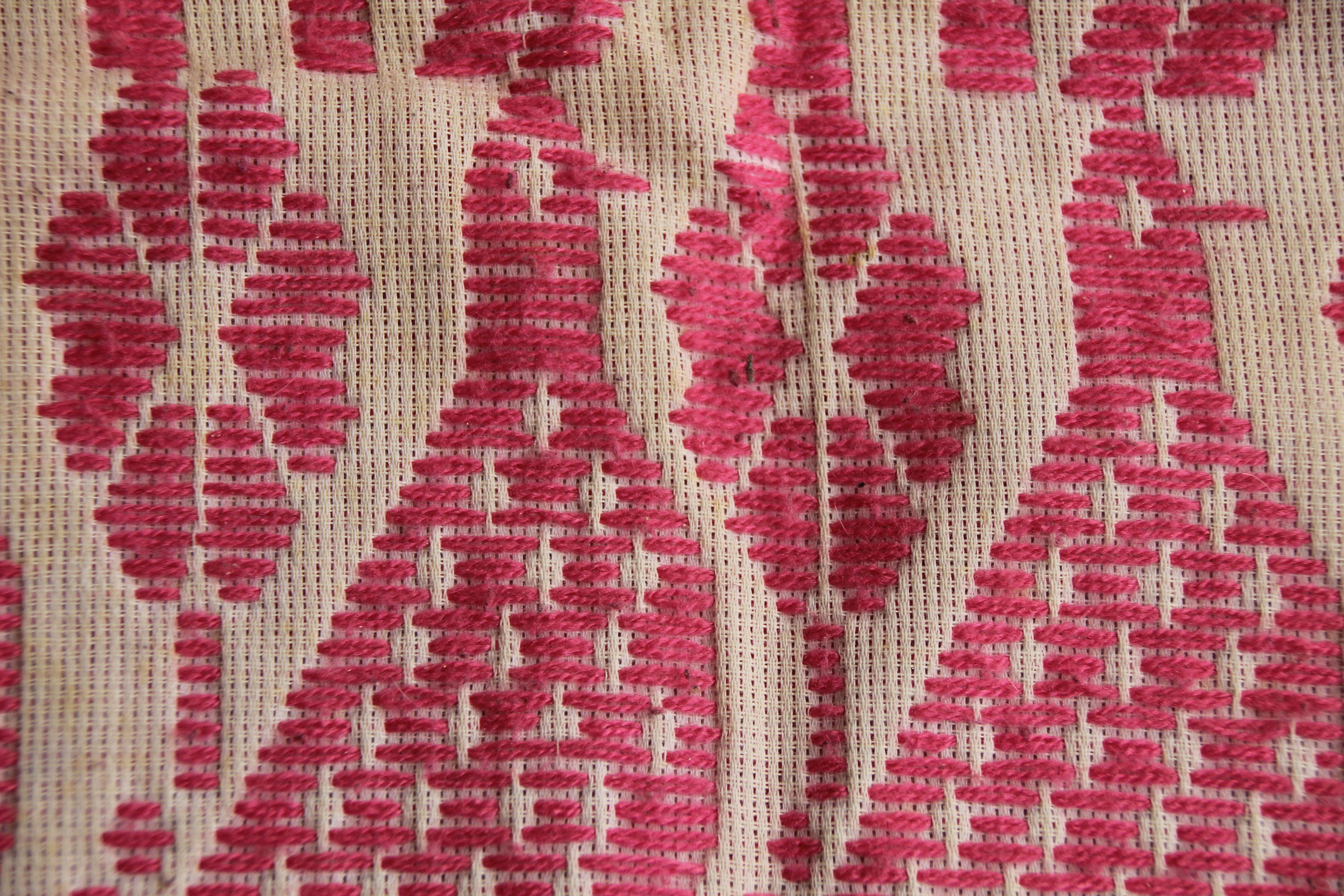
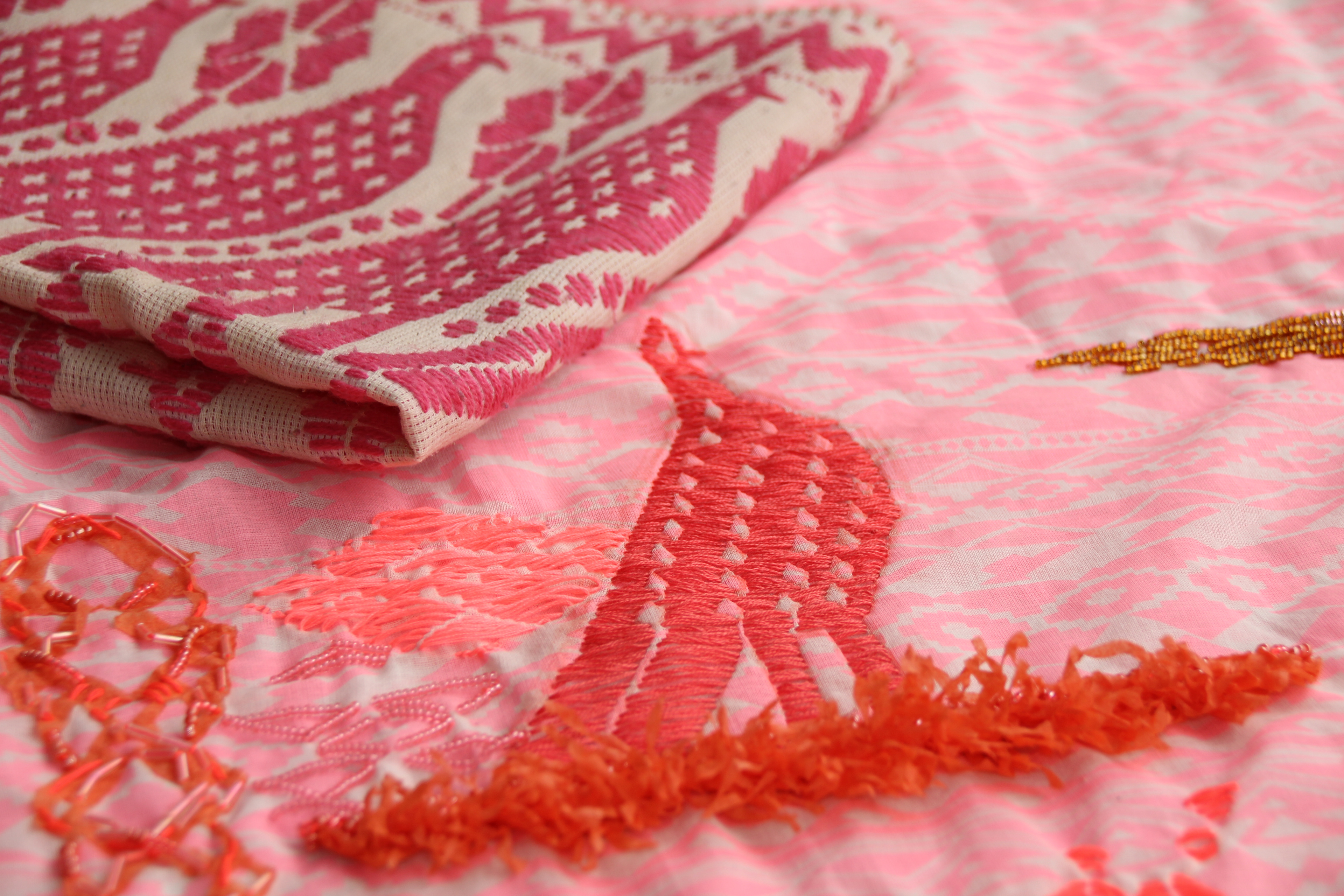
It's Really Hard To Thread A Needle
2019
How do we form identity when we are left alone unable to decipher the relevance of shared histories and lived experience? Our lack of understanding renders our own past inaccessible and forces us to confront the world with what little knowledge that is still untouched. With what is left behind it seems we face a problem of whether we should (or even can) speak of what we will never fully know or if we should risk becoming further estranged from identity through our lack of discourse?
This series of works seeks to answer these questions through the creation of textile and sculptural works that incorporate Mexican aesthetics. Each piece is inspired by a specific memory the artist relates to mexico, by combining these elements and incorporating text the work seeks to find understanding on how identities are formed. the use of wearable items as a bases for each piece allows the artist to explore ideas of performative identity that is placed upon us.
I Cannot Forget My Mores
Fabric, Embroidery Thread
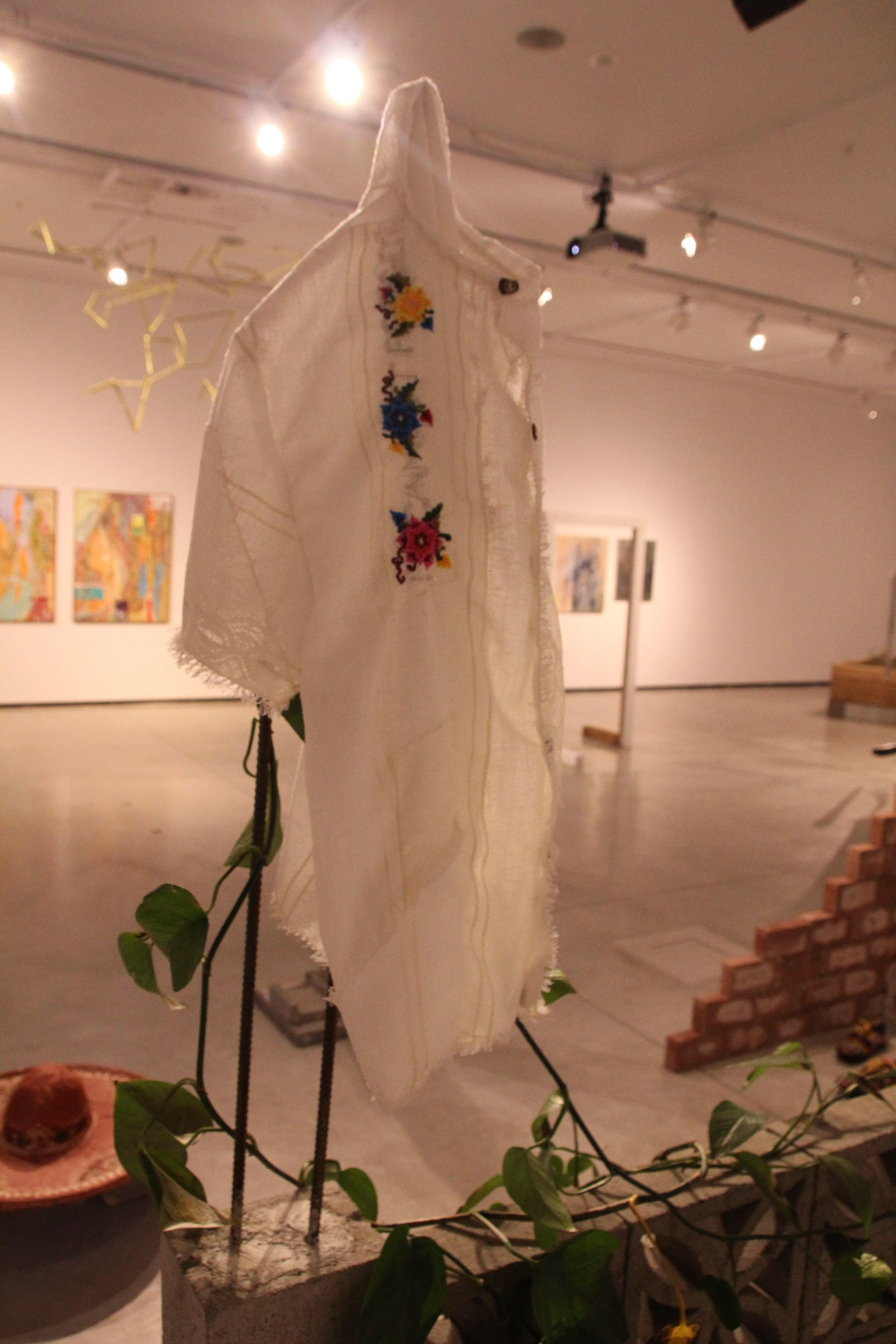
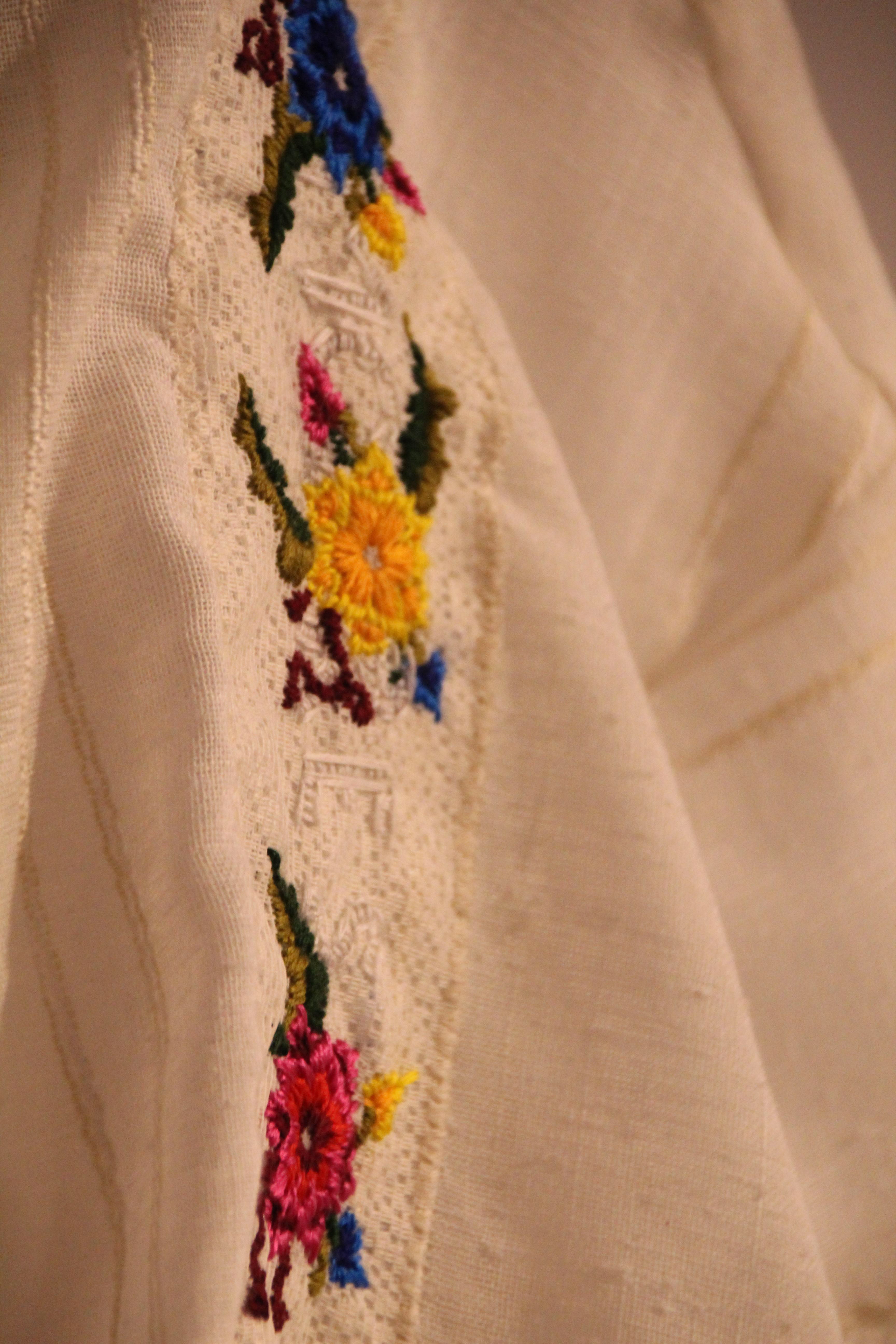
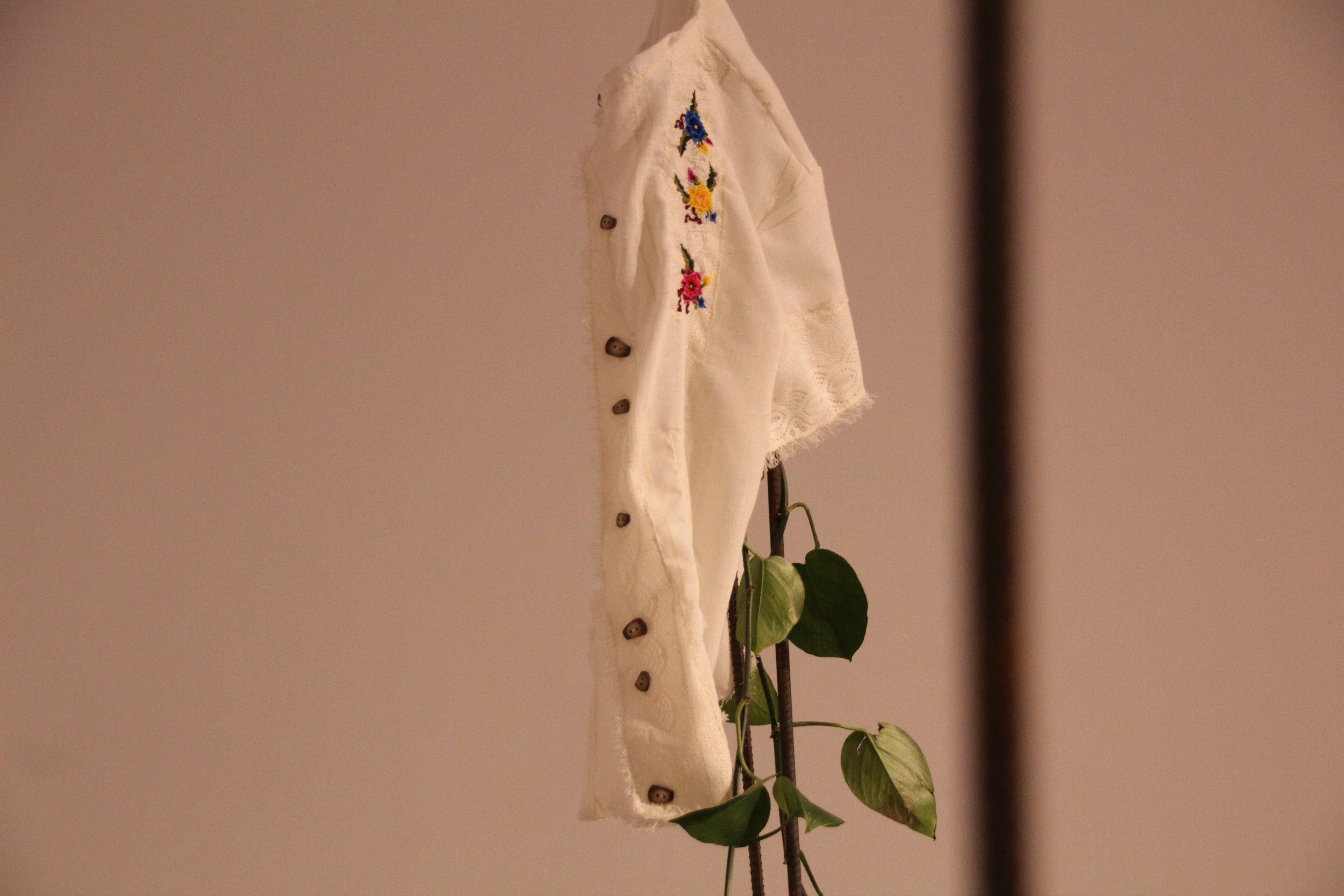
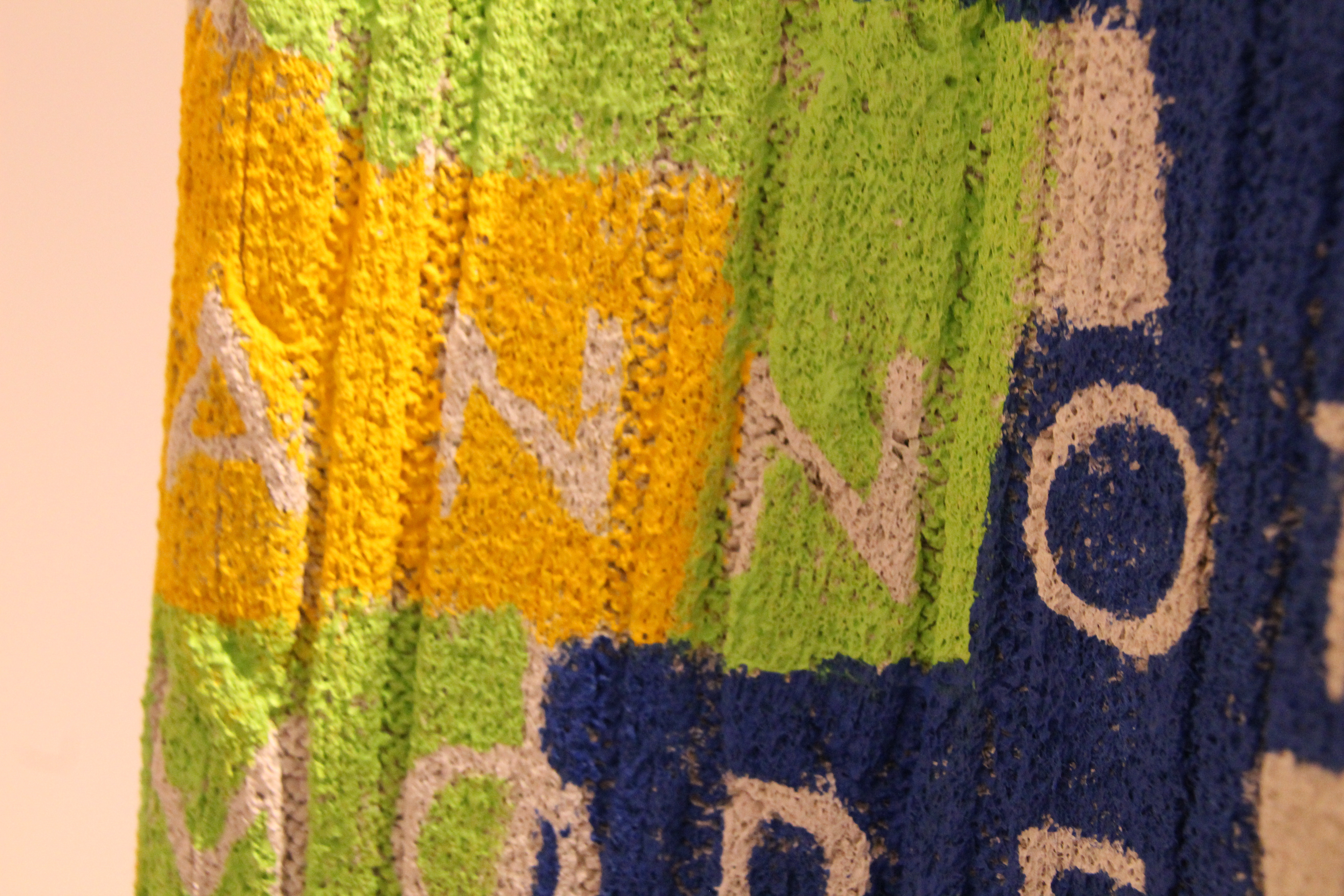
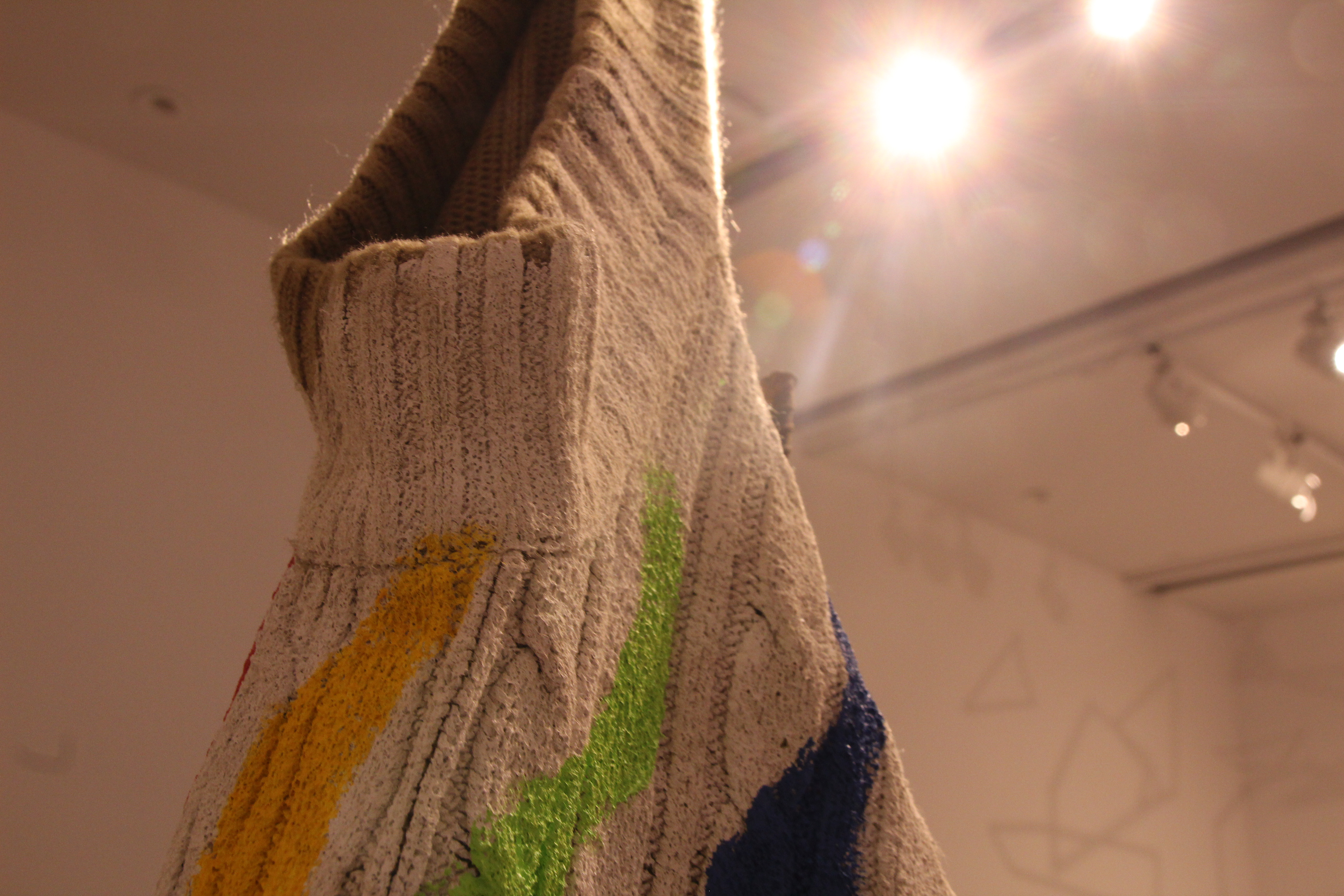
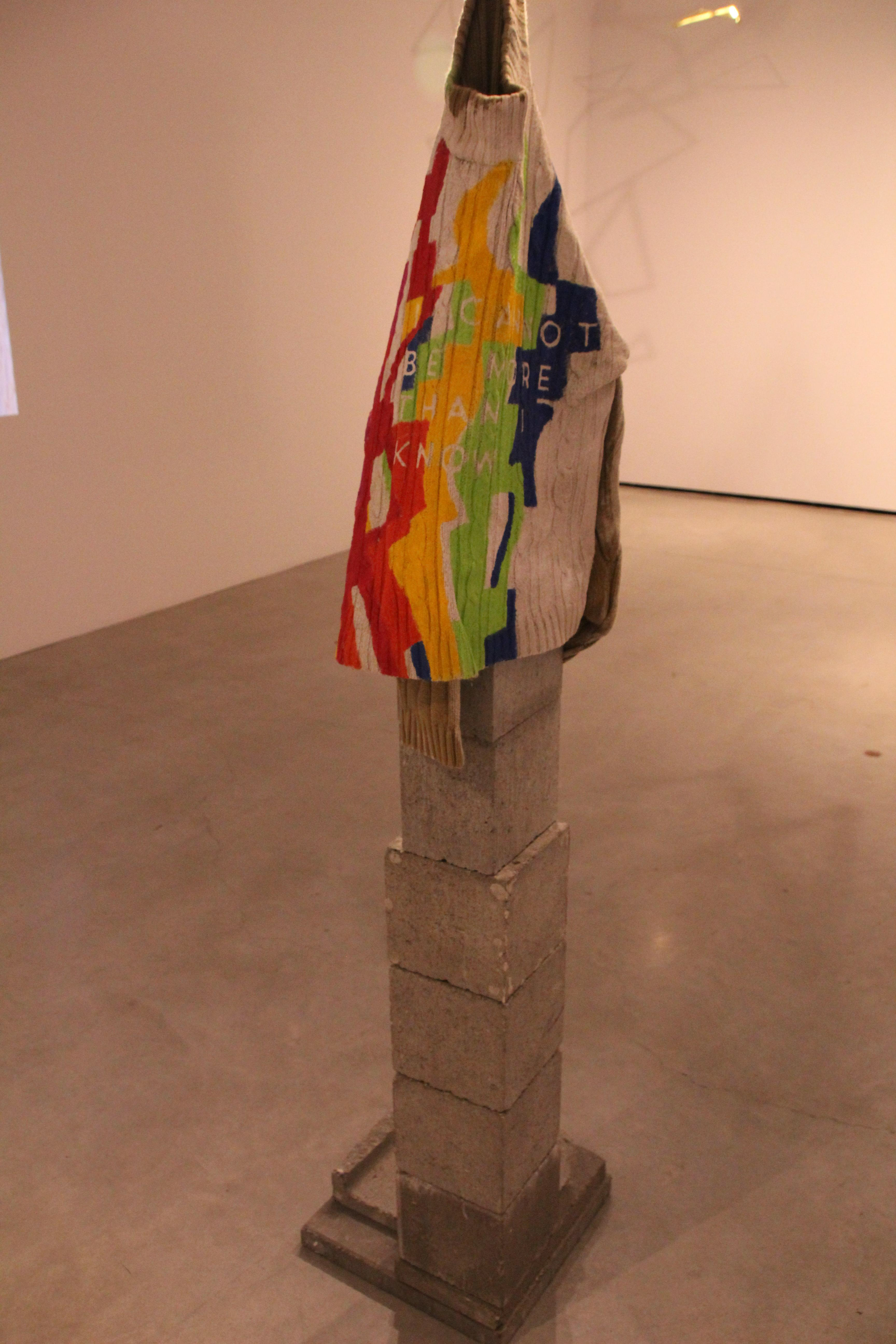
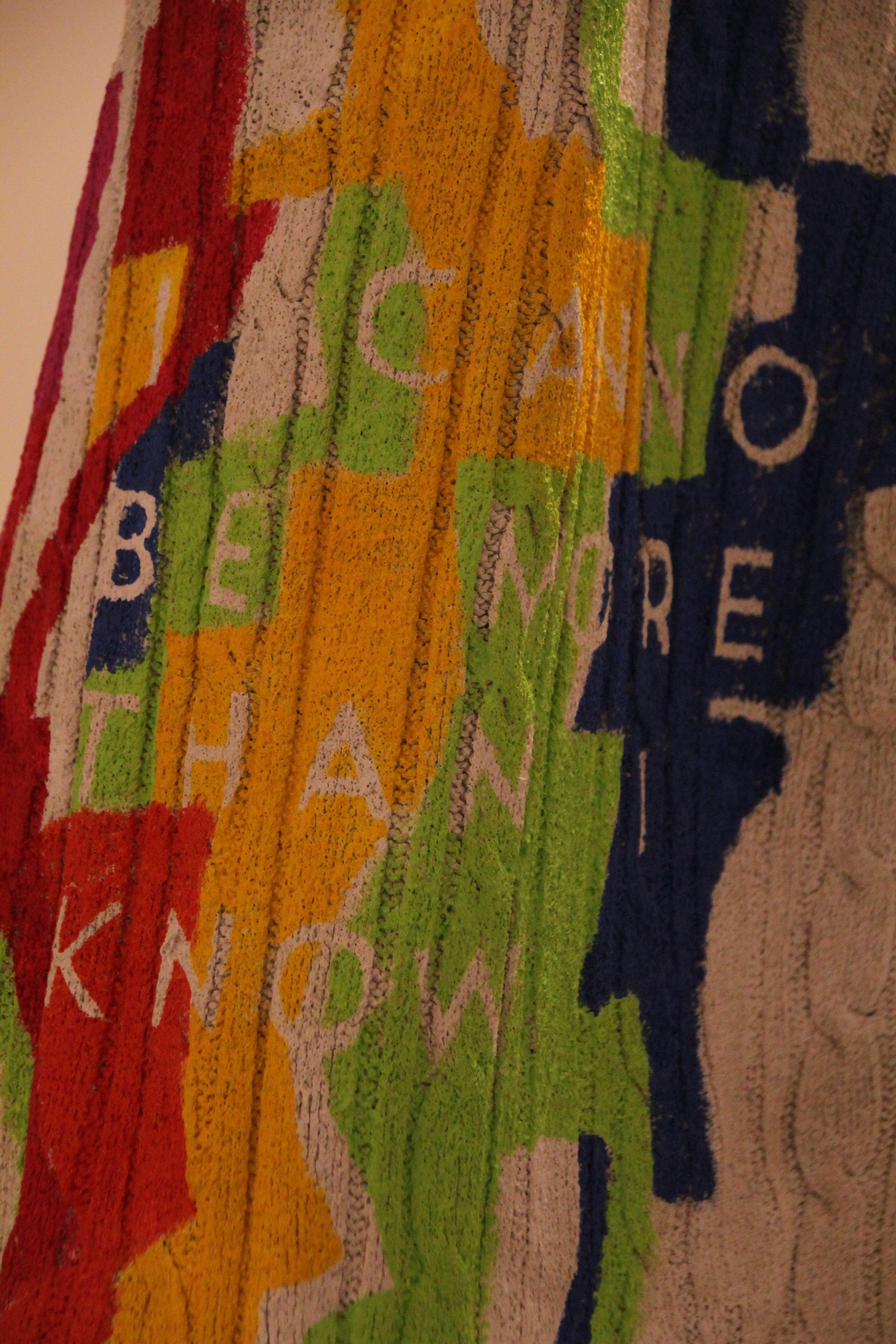
I Cannot Be More Than I Know
Old sweater, House paint, Acrylic paint
I Cannot Imagine Anything Taller Than The Trees In My Own Backyard
Faux suede, Embroidery thread, Souvenir Mexican purses
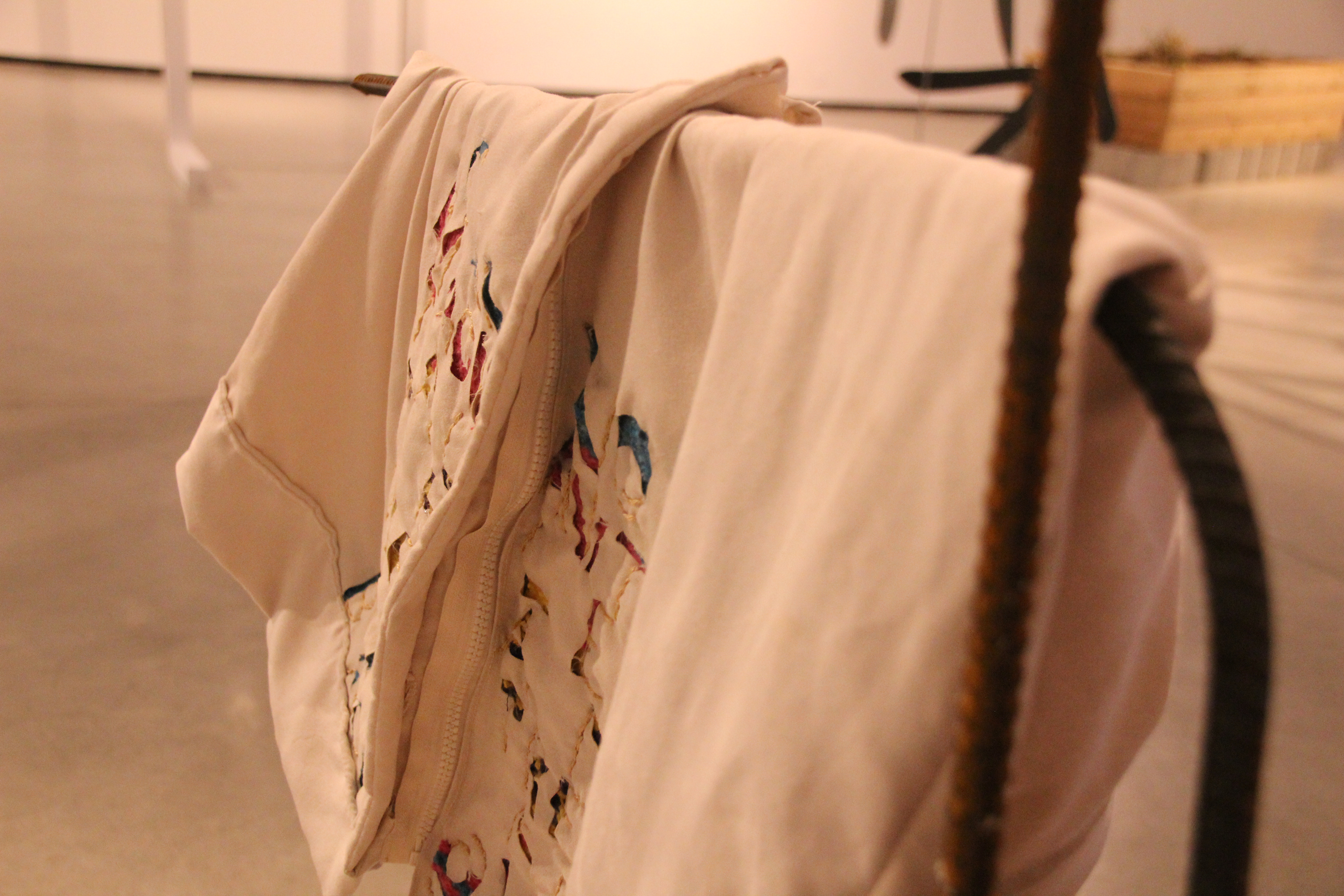
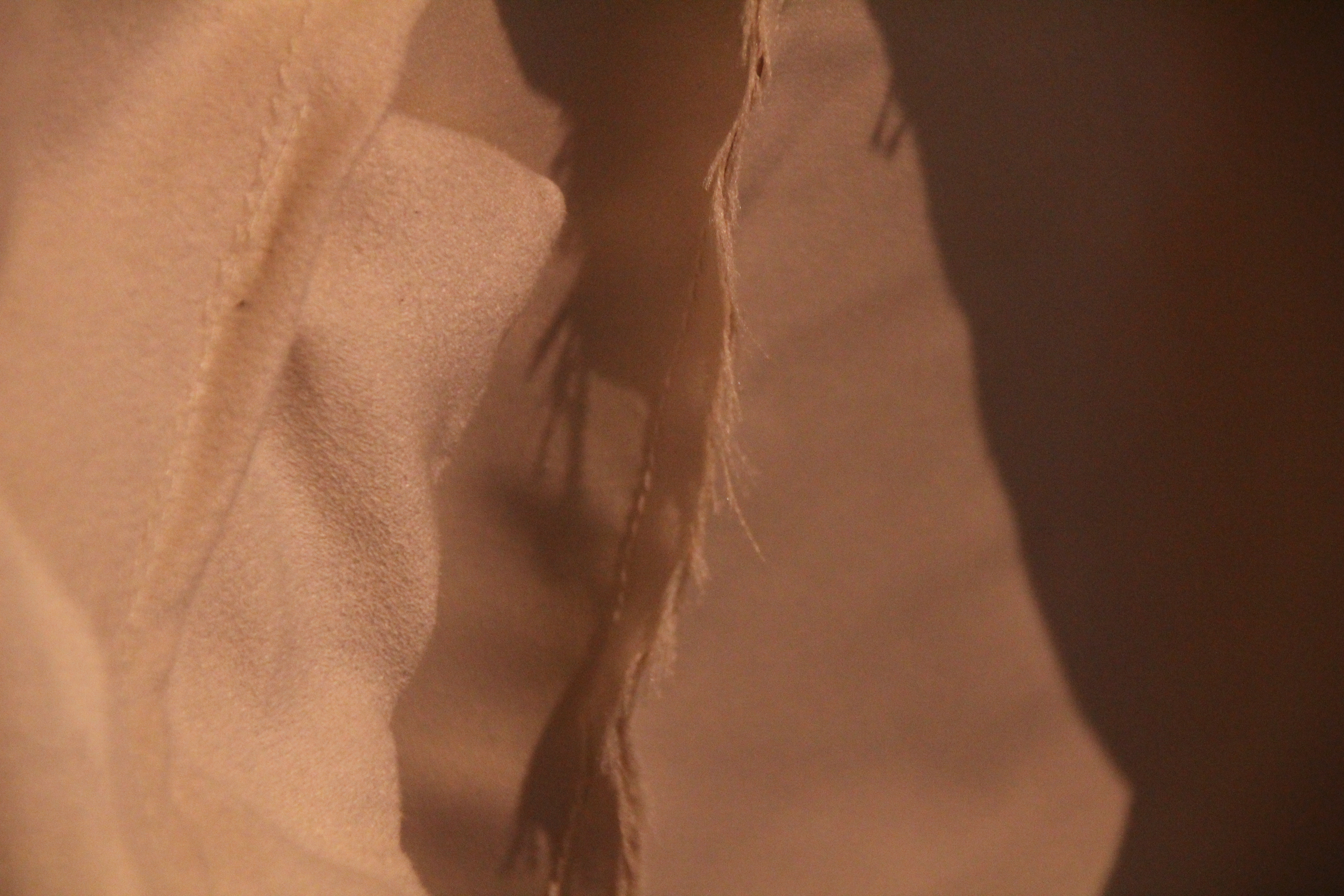
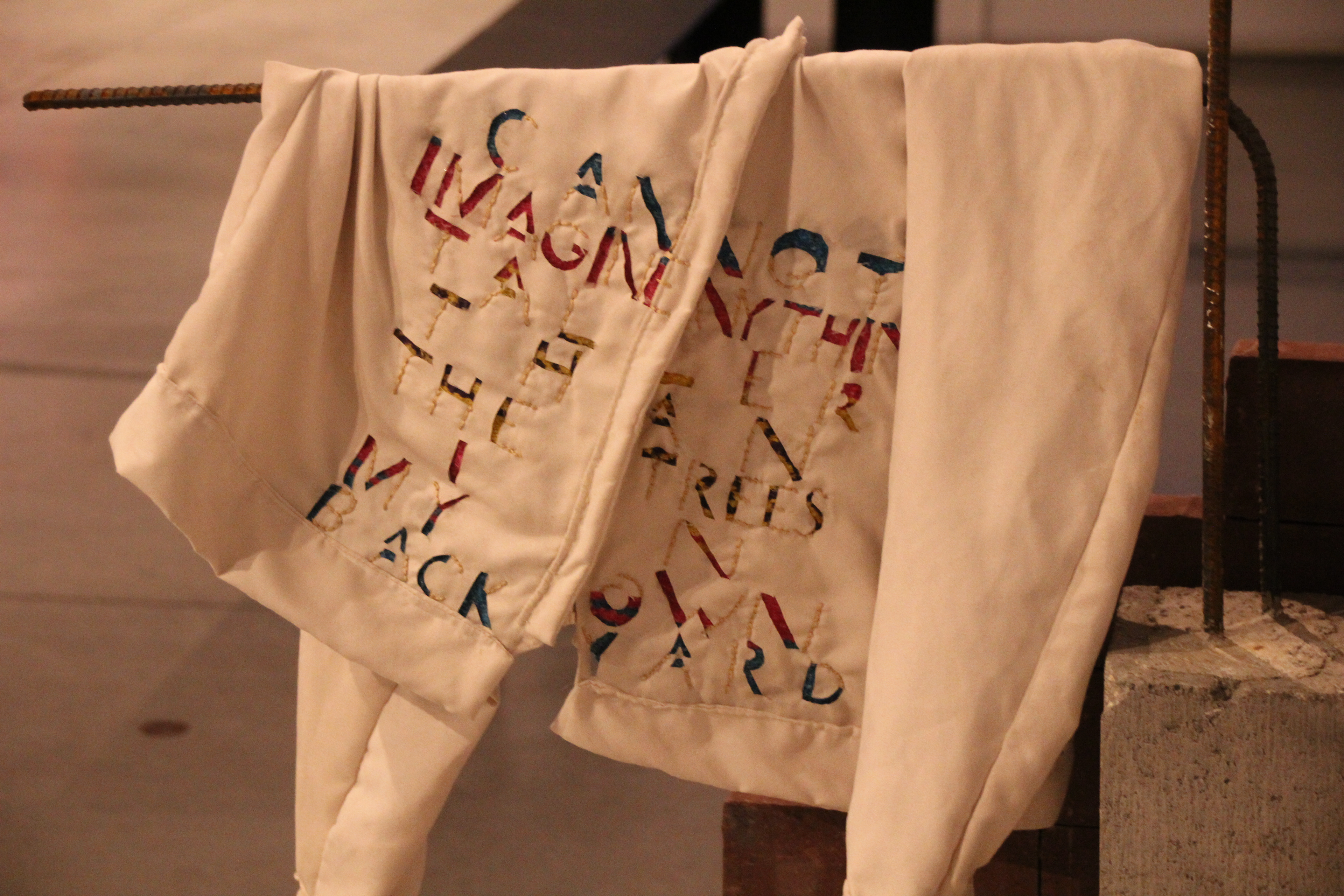
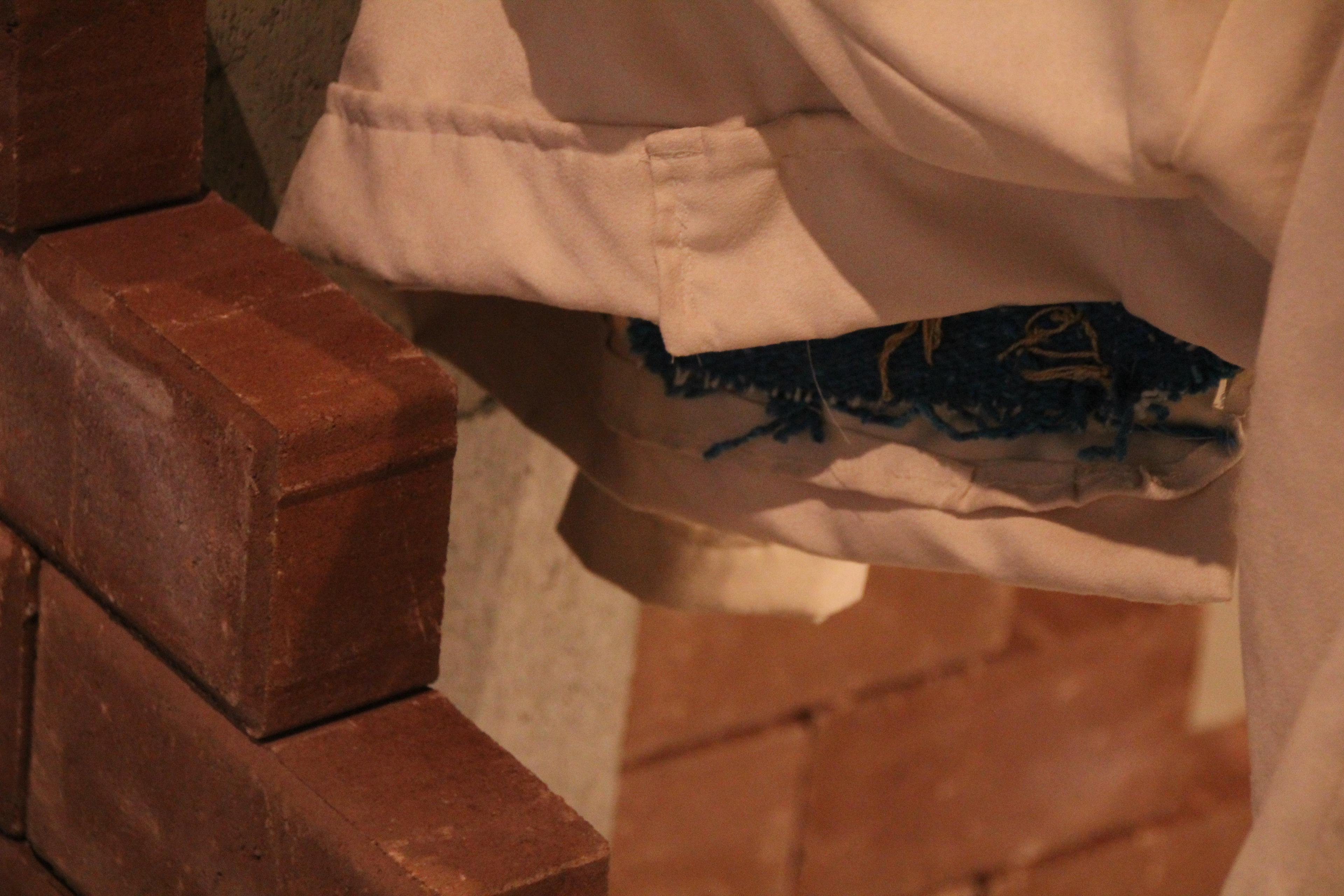
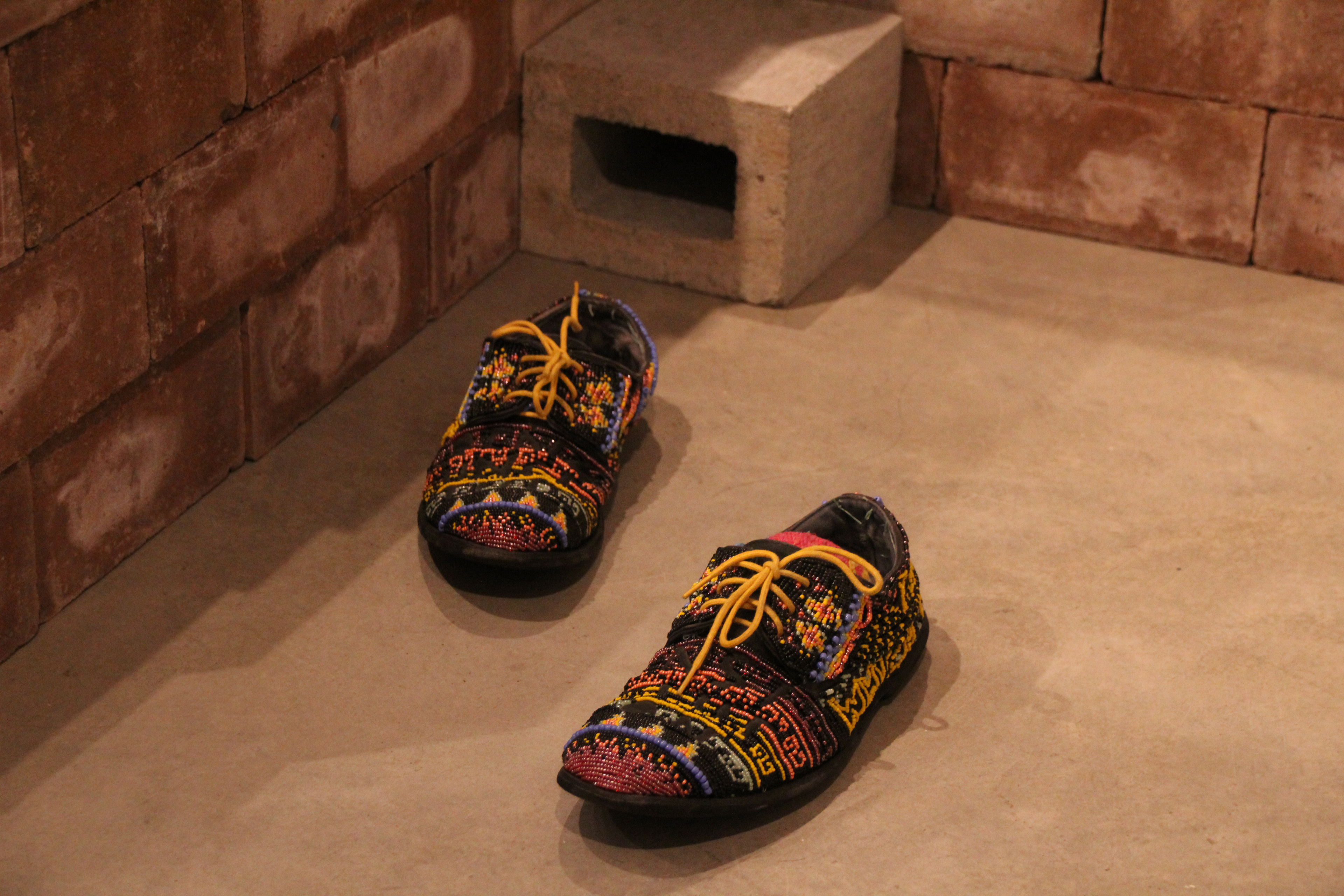
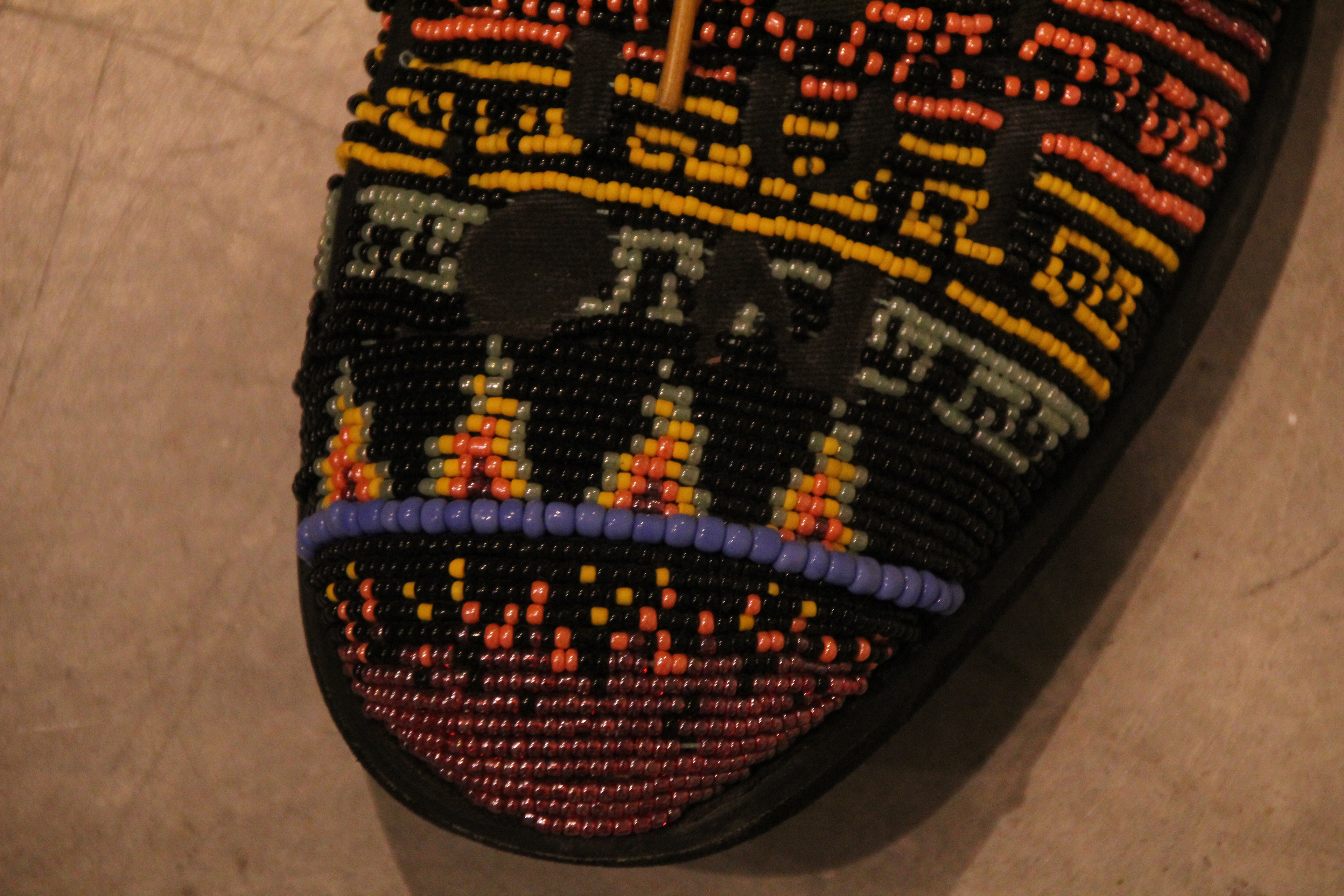
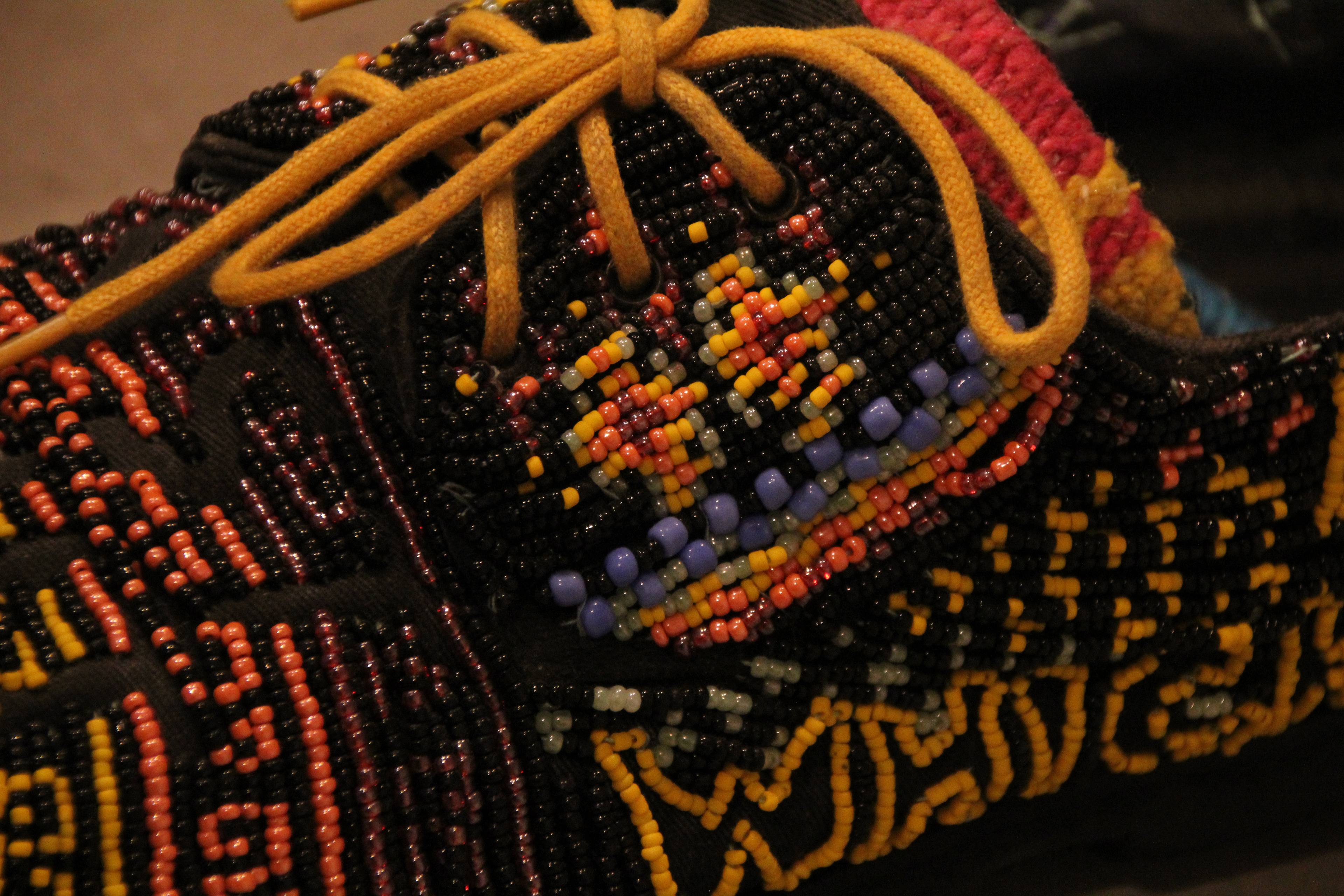
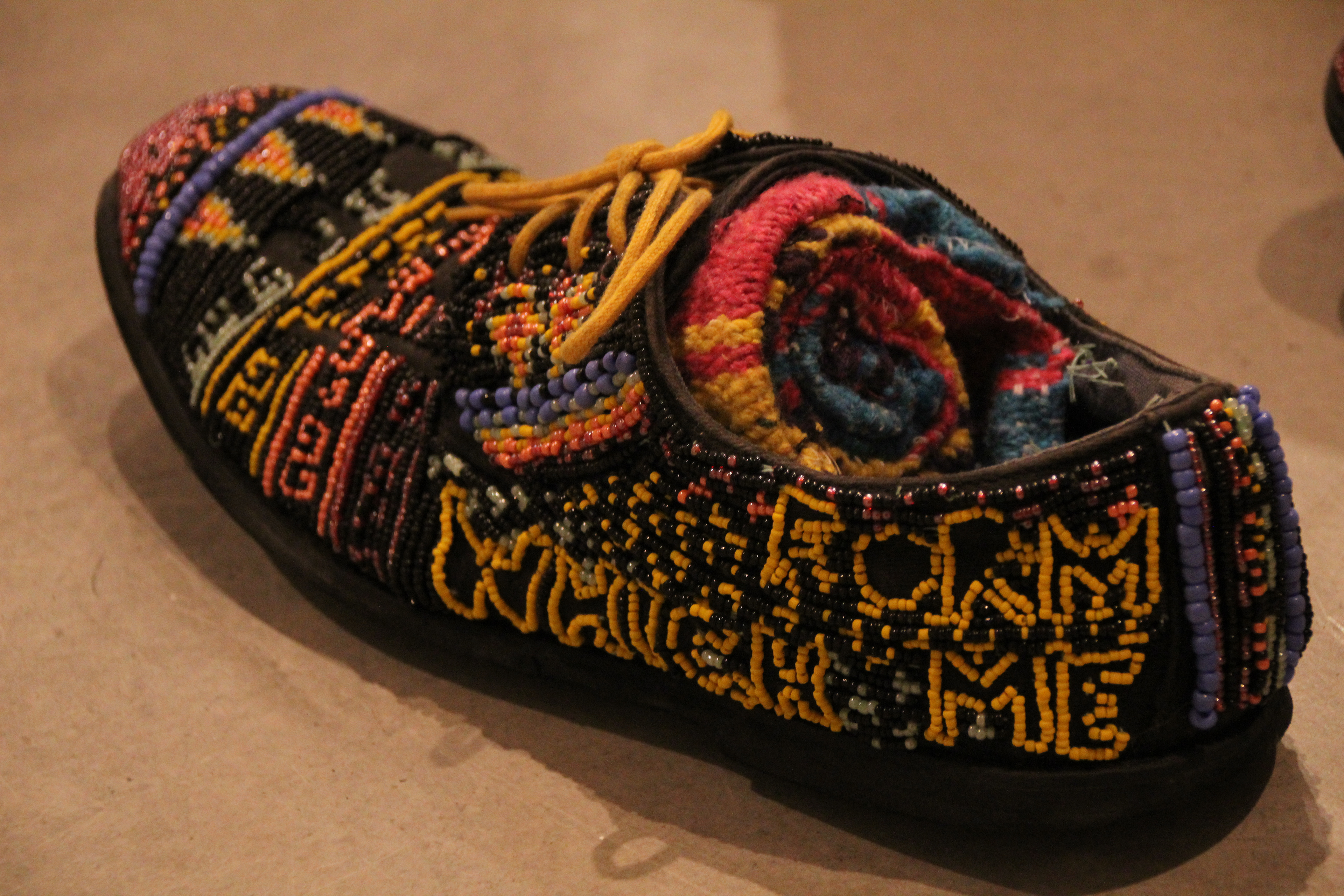
I Cannot Denounce The Institutions Which Form Me
Old shoes, Thread, Shakira glass beads
I Cannot Withdraw from My Own Experiences
2 Rebozos, Thread, Acrylic paint
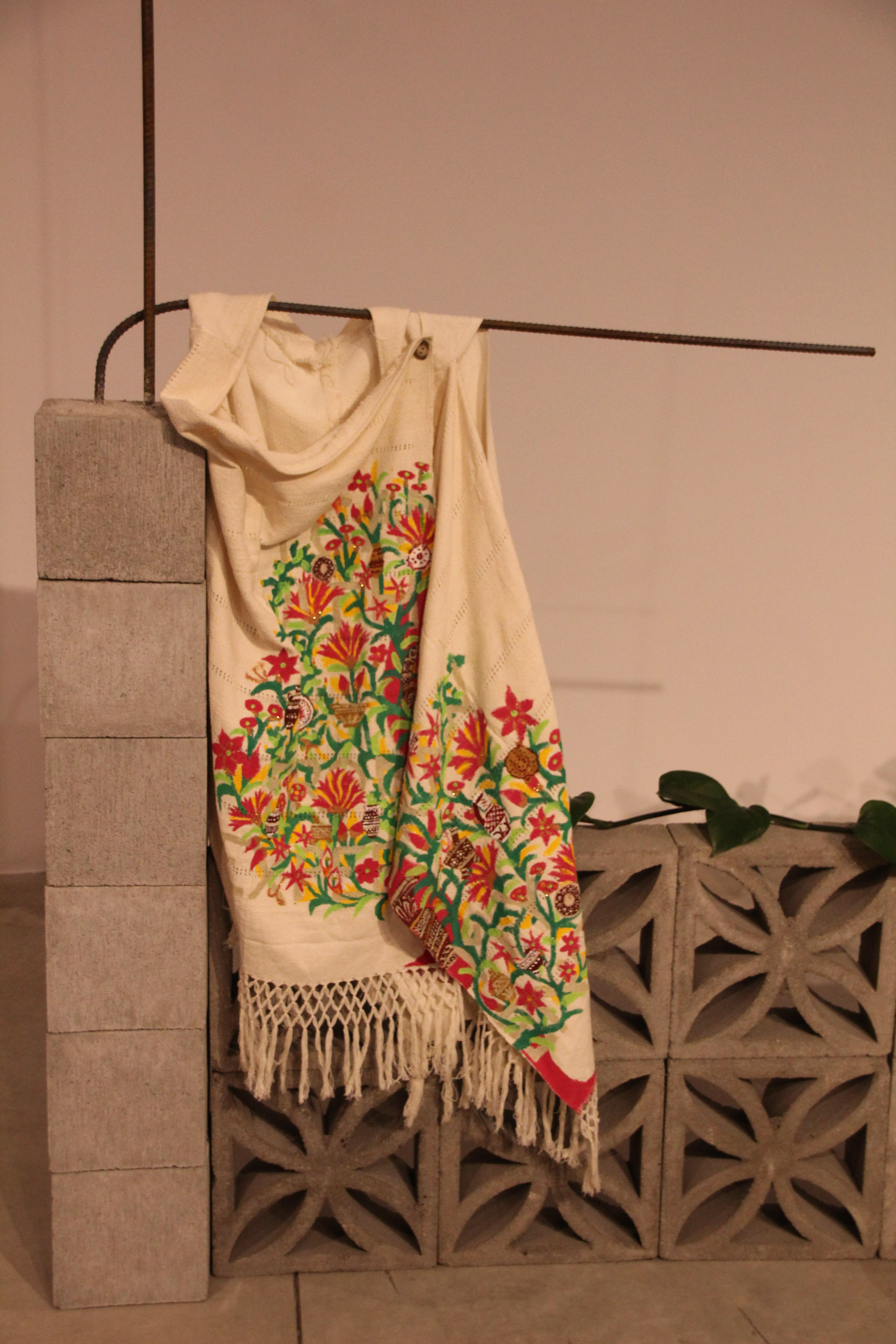
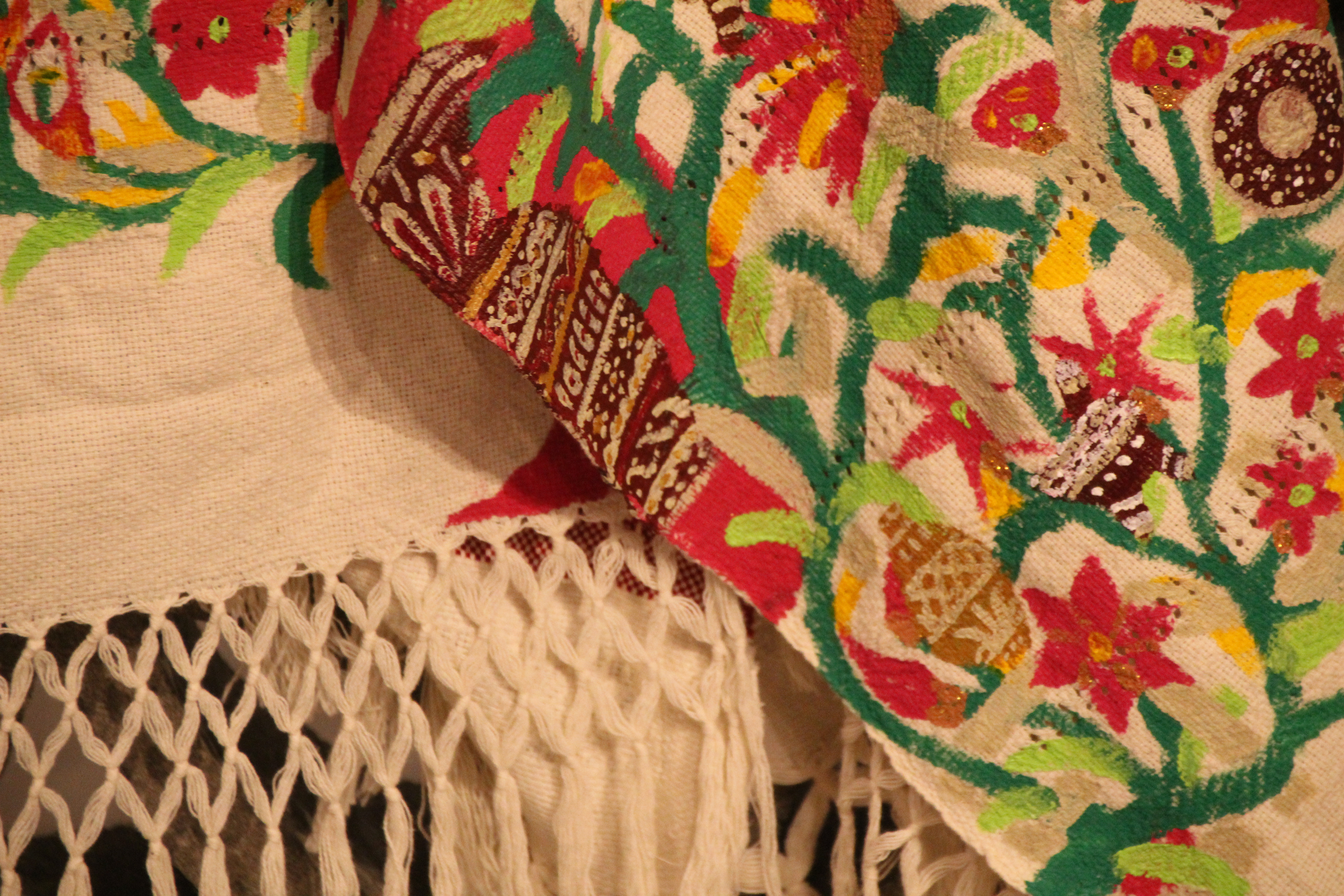
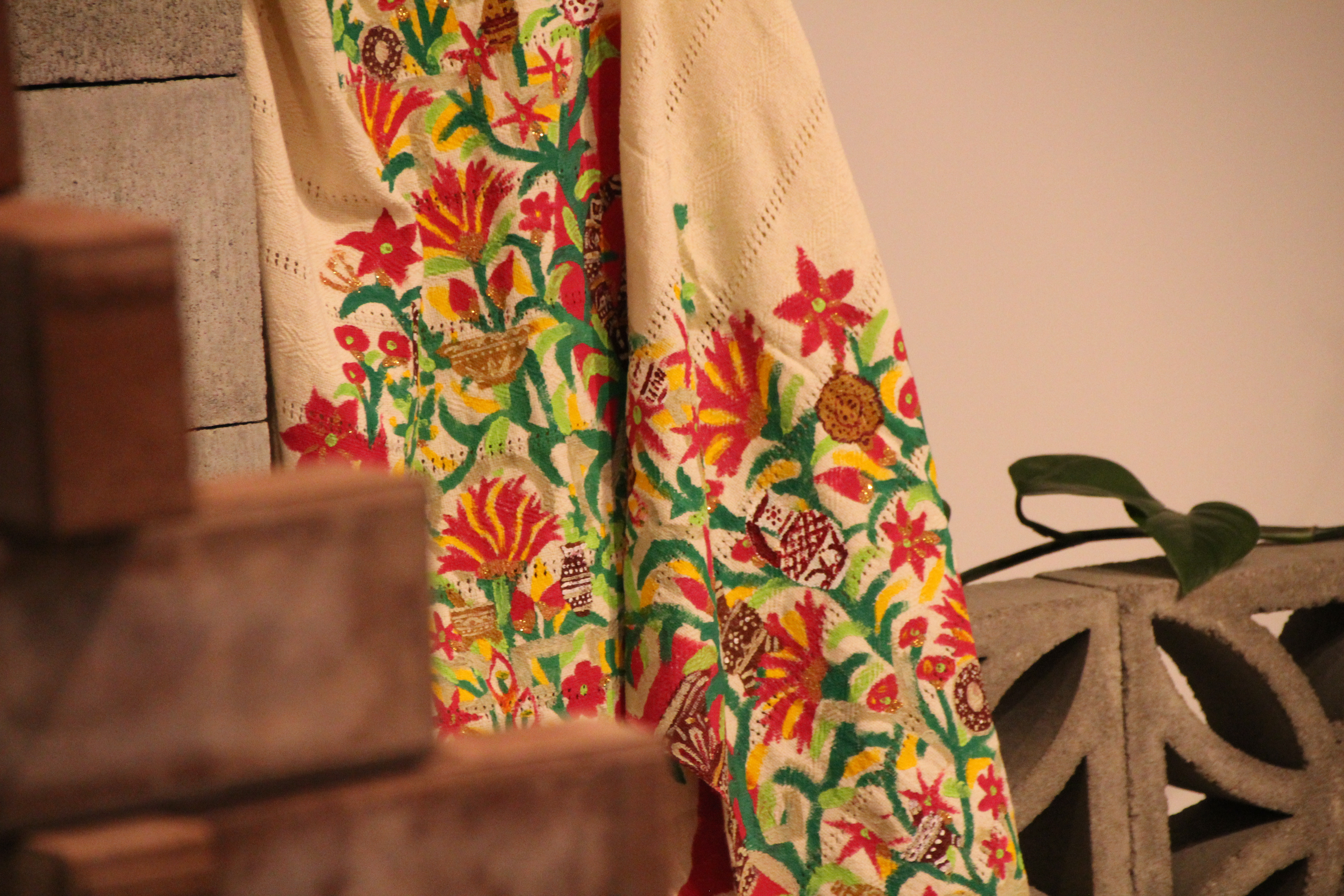
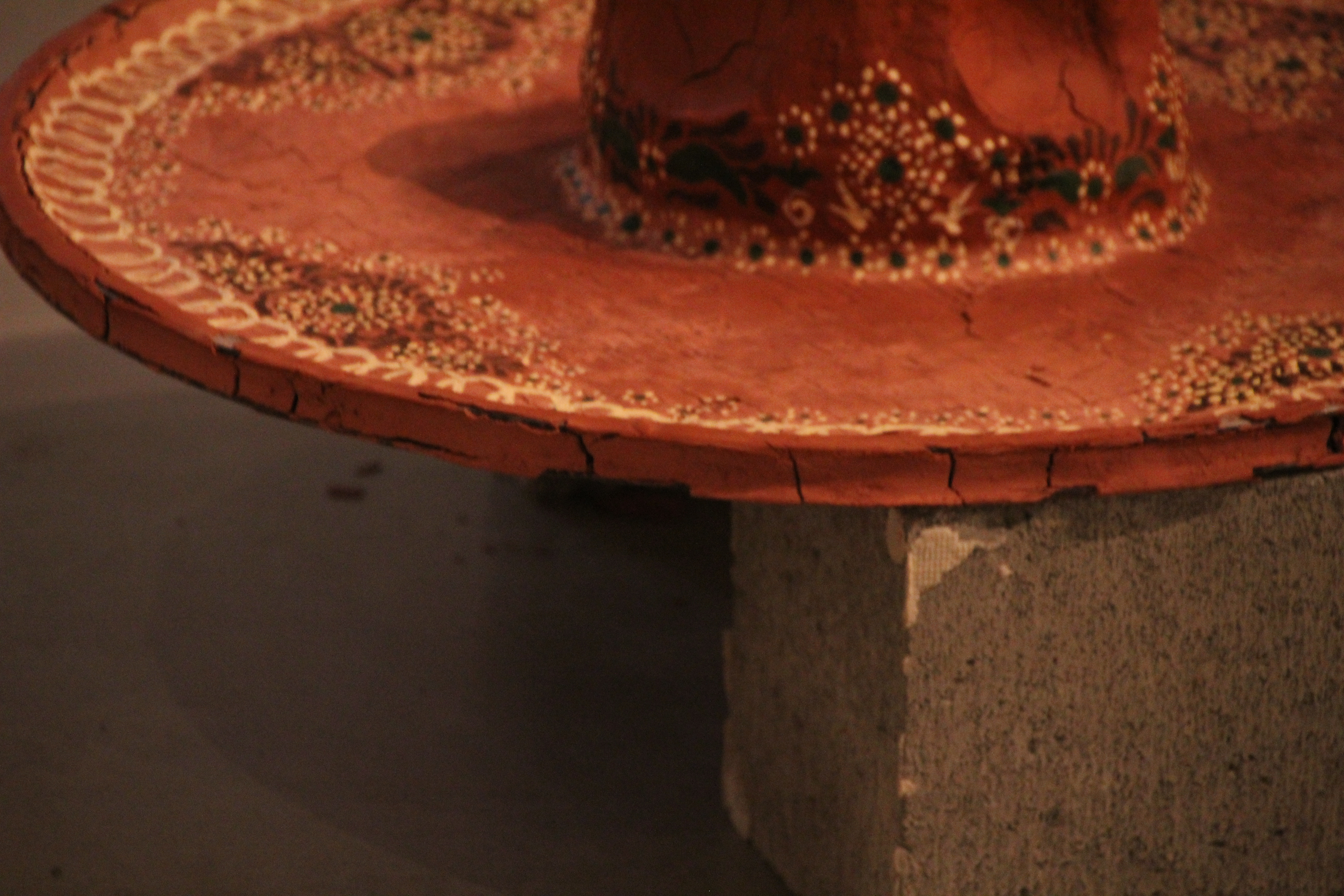
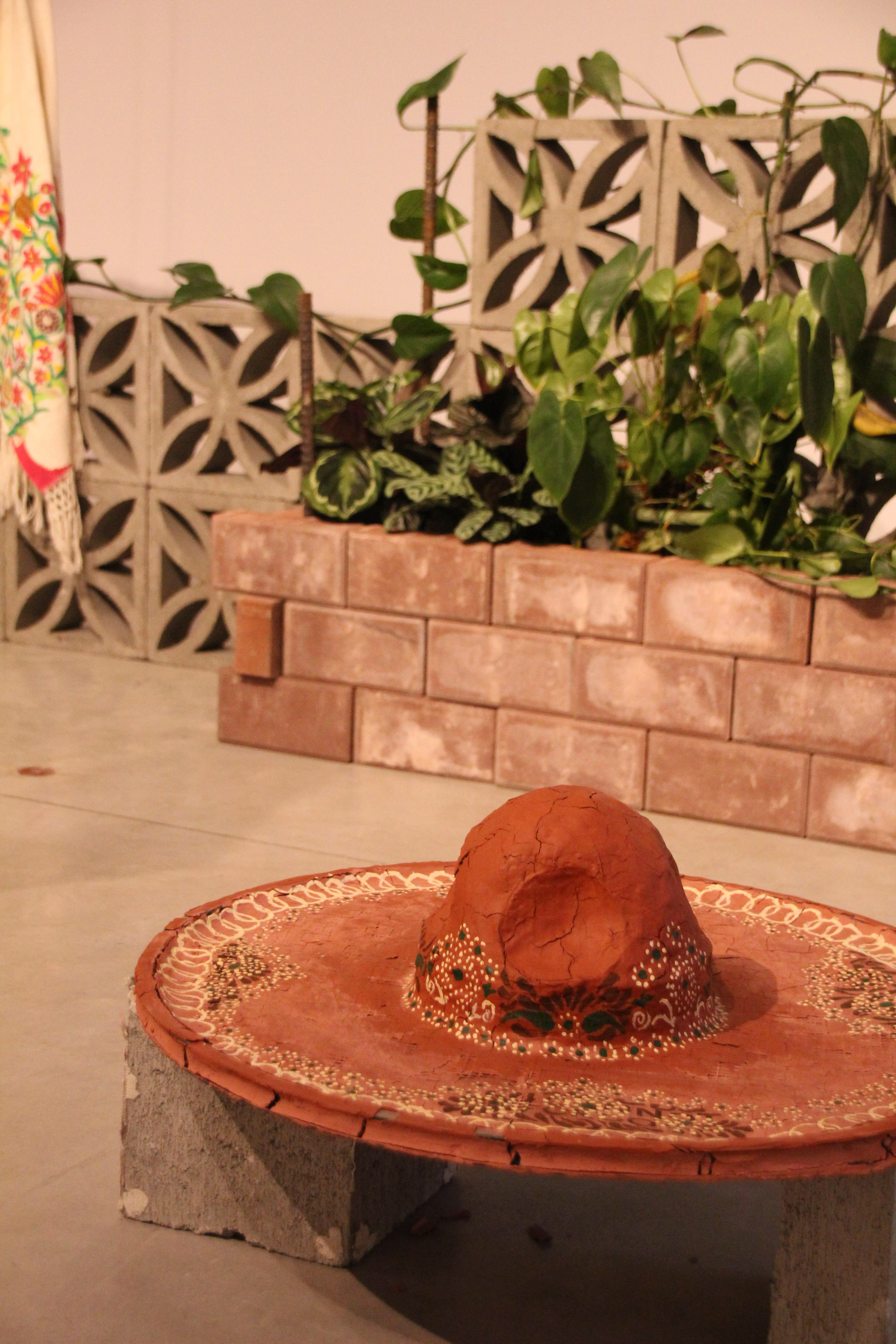
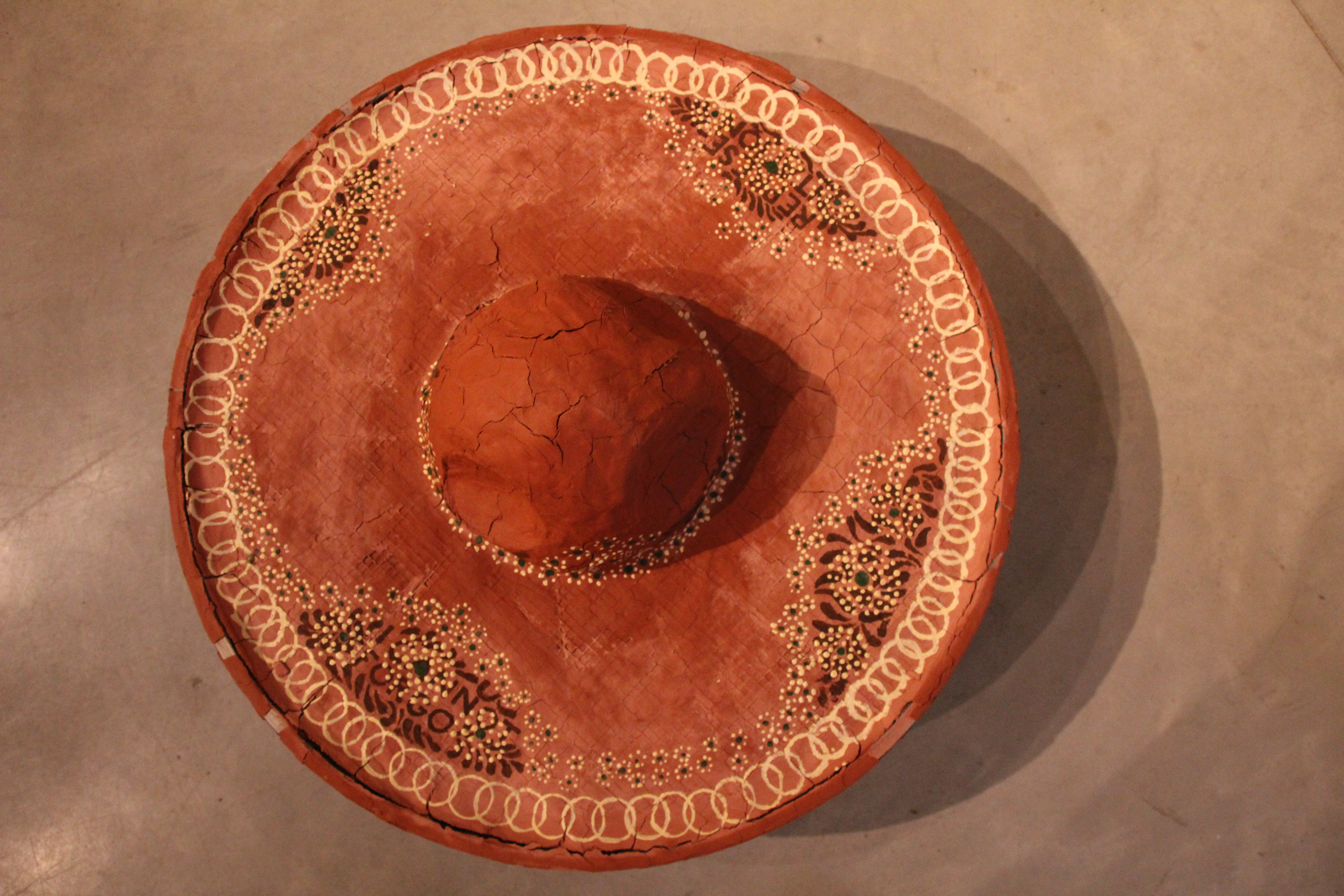
I Cannot Forgo Representation
Red clay, Chicken wire, A bicycle wheel, Wire, Acrylic paint
